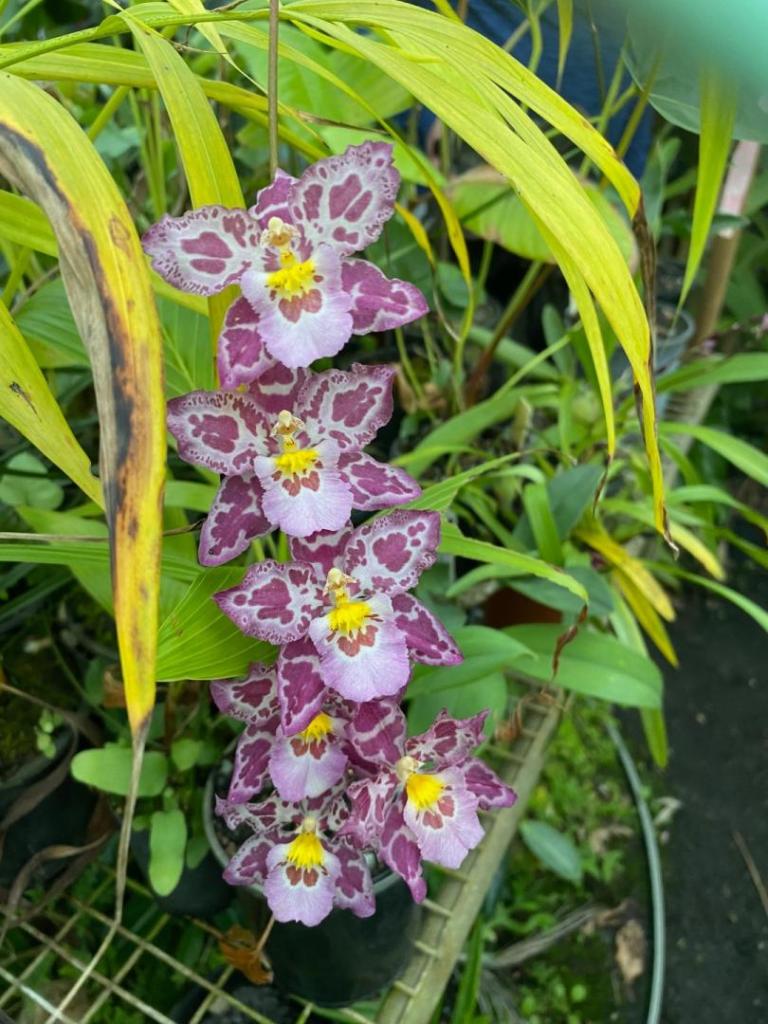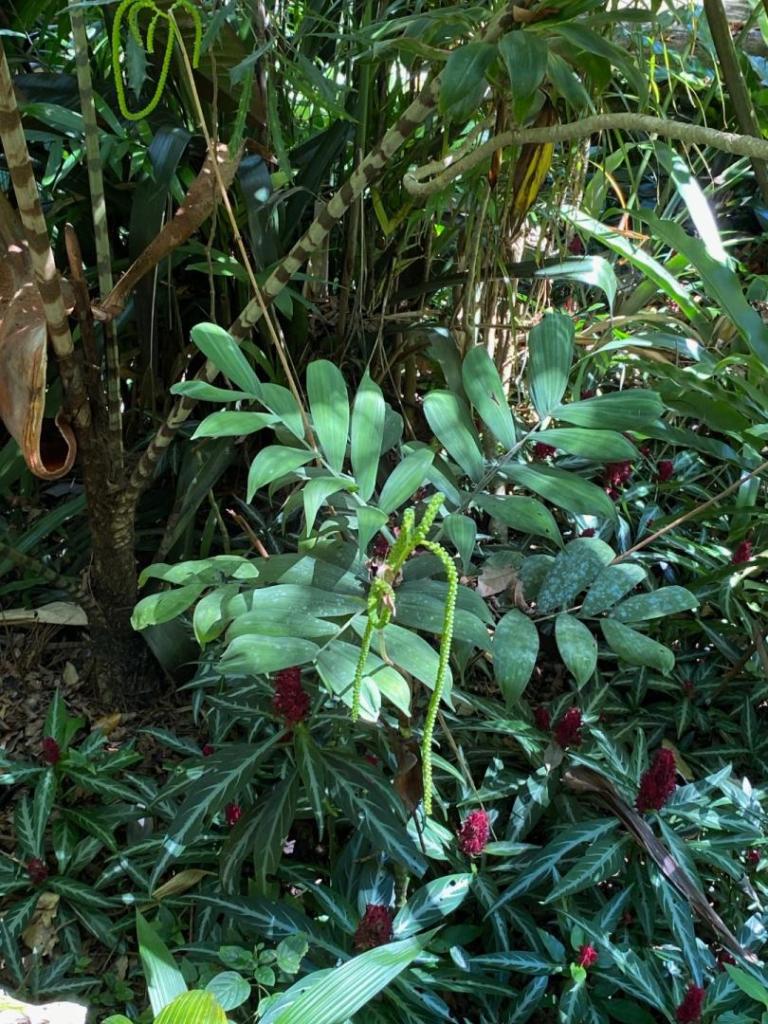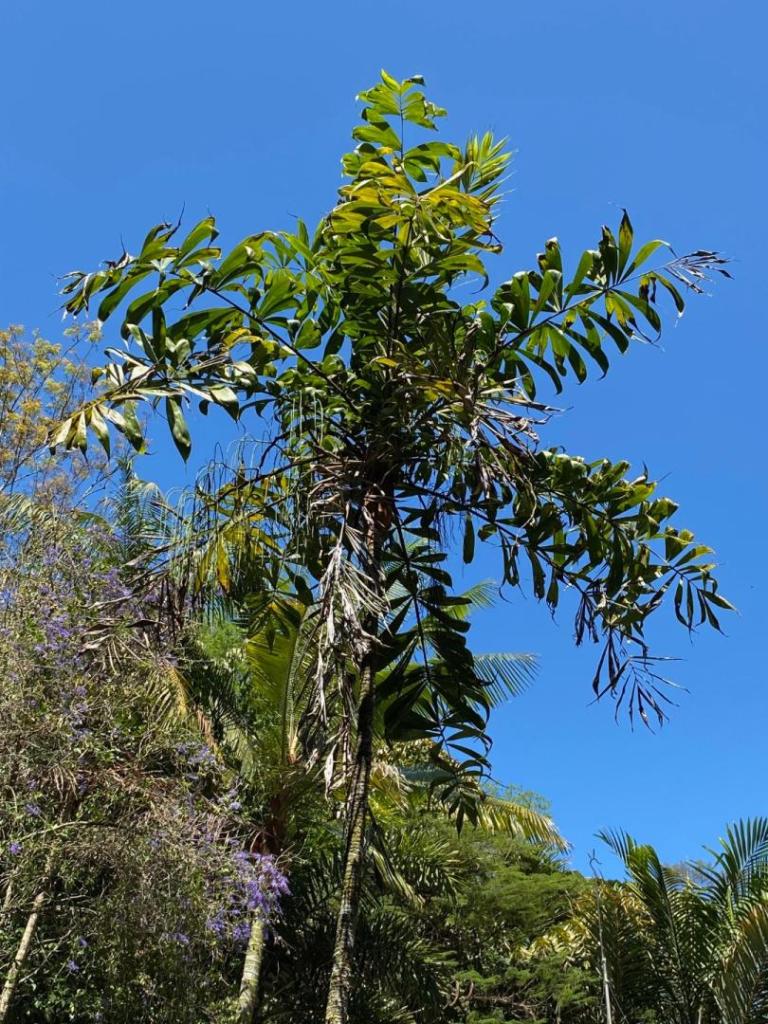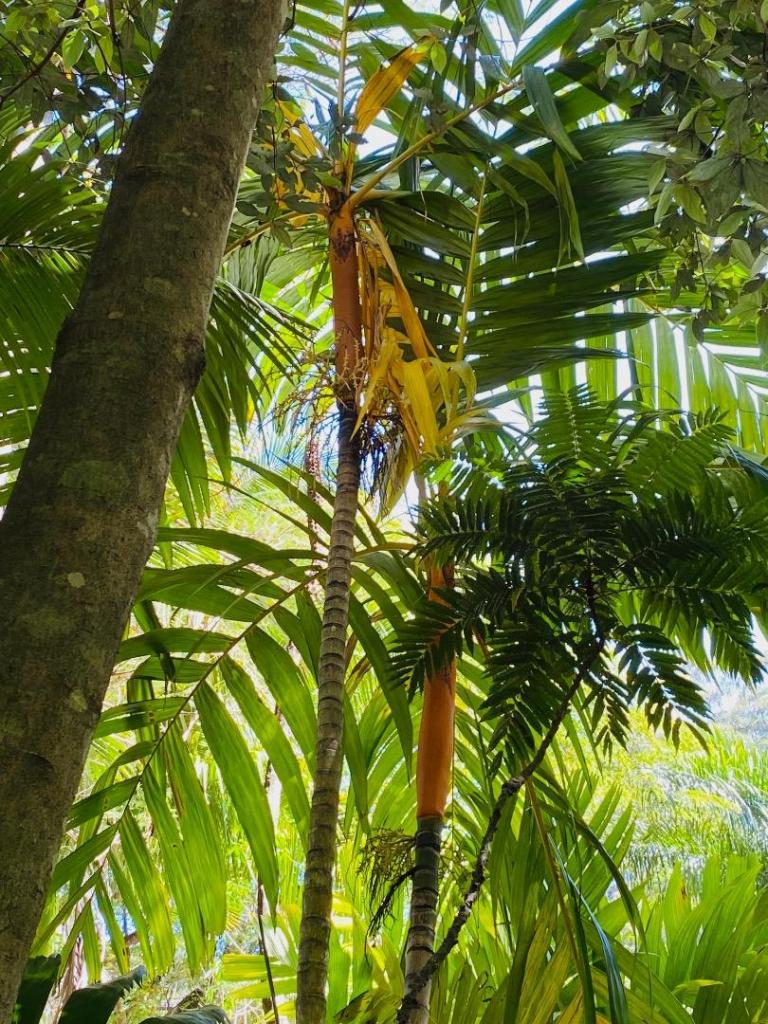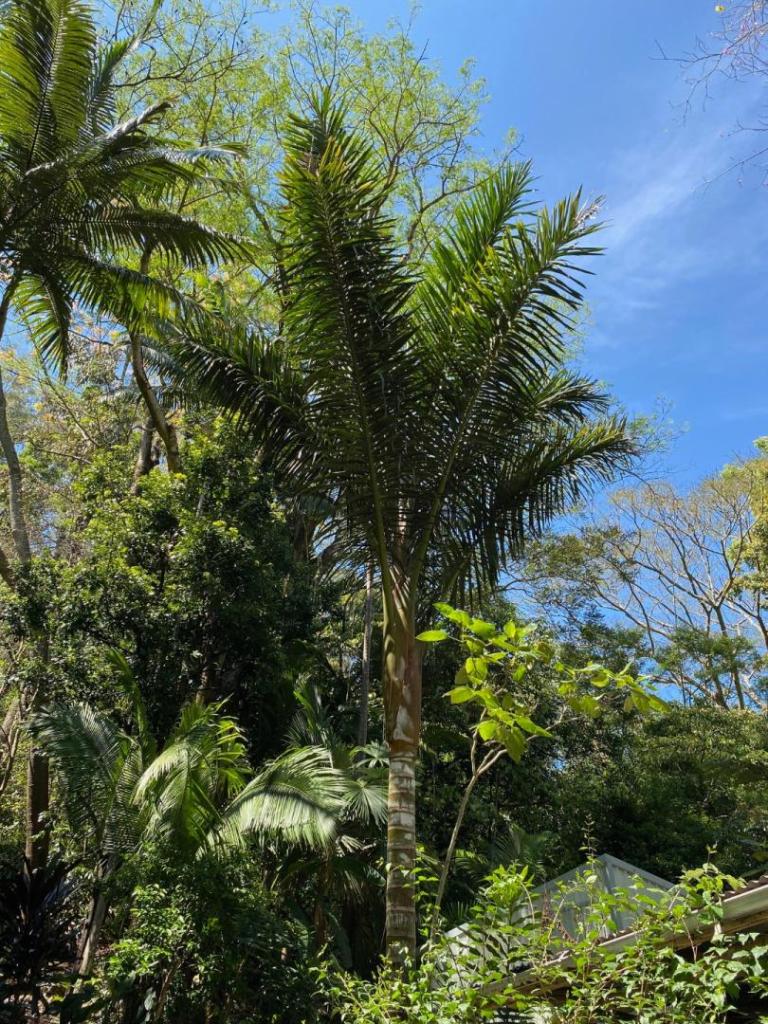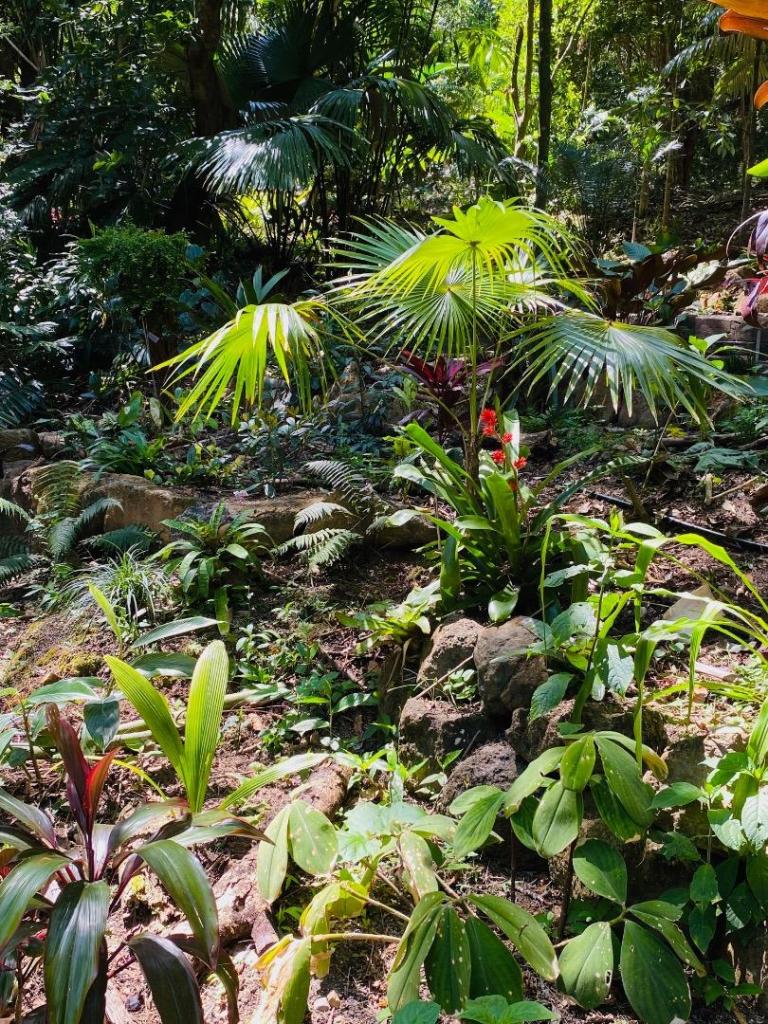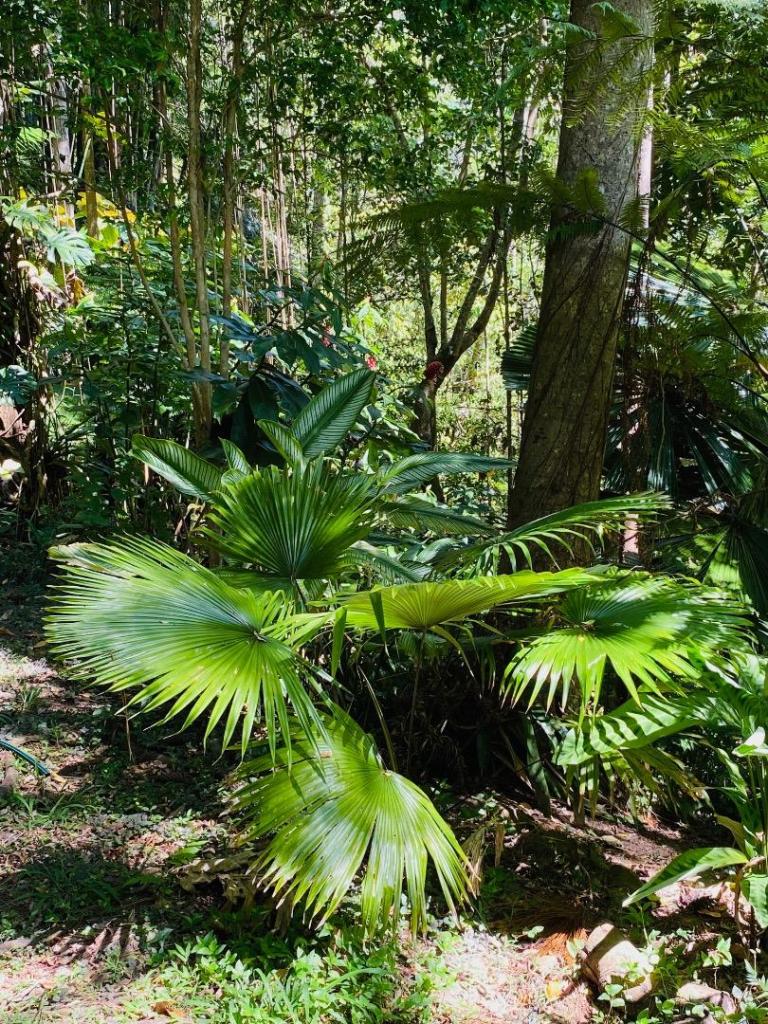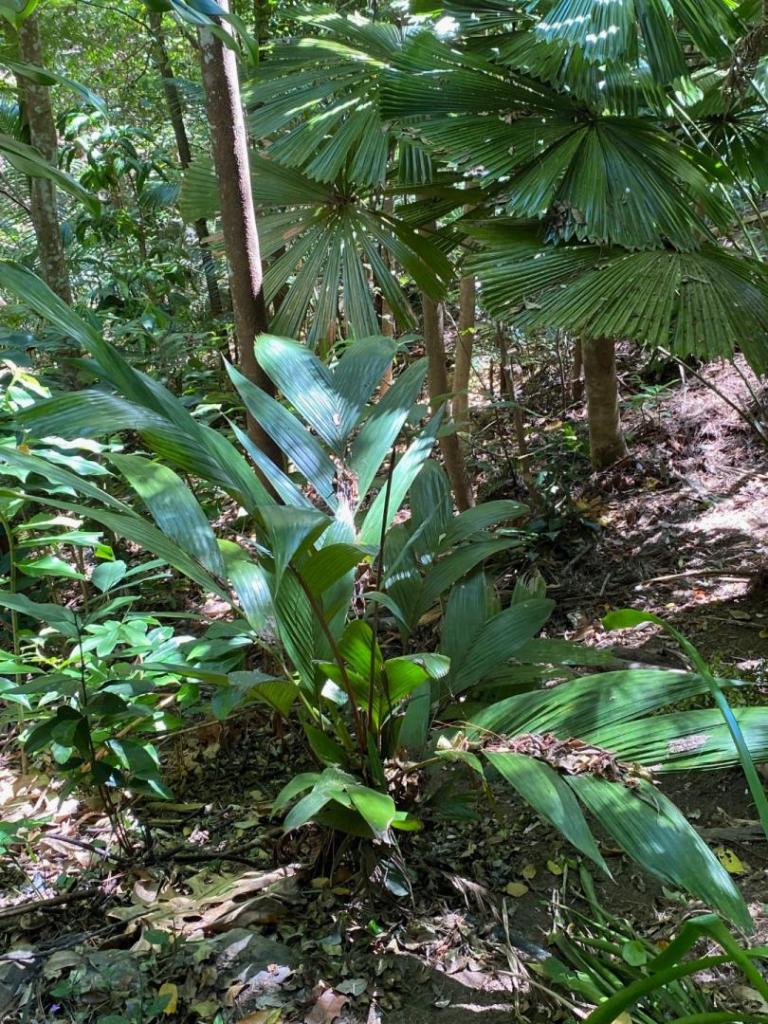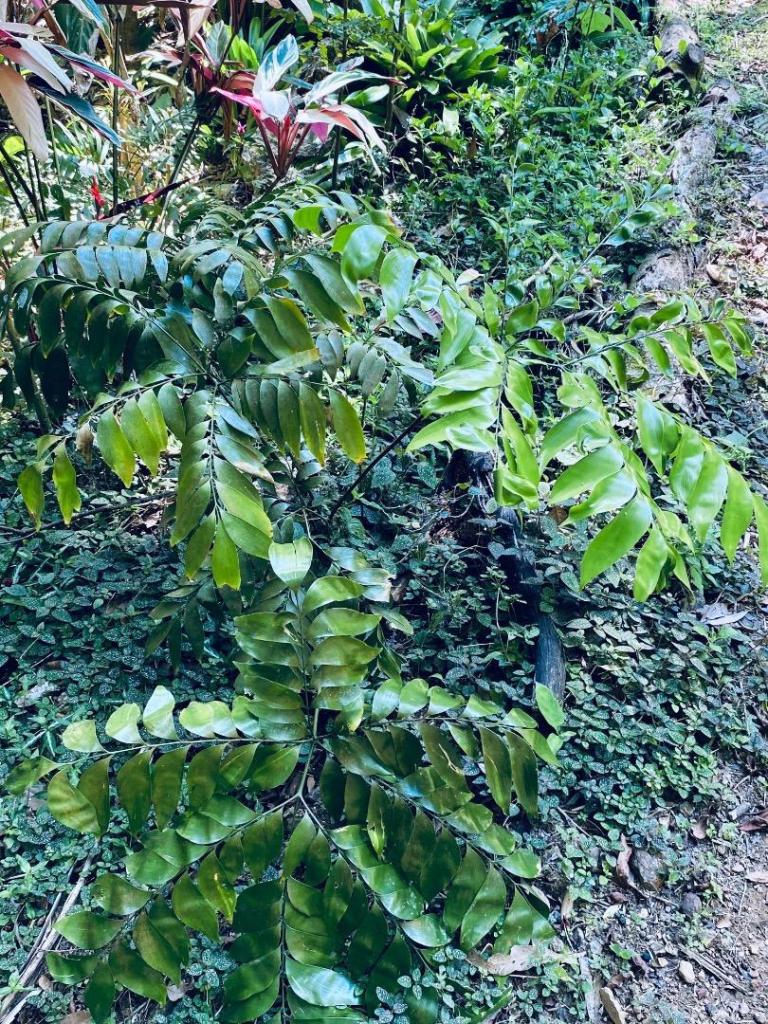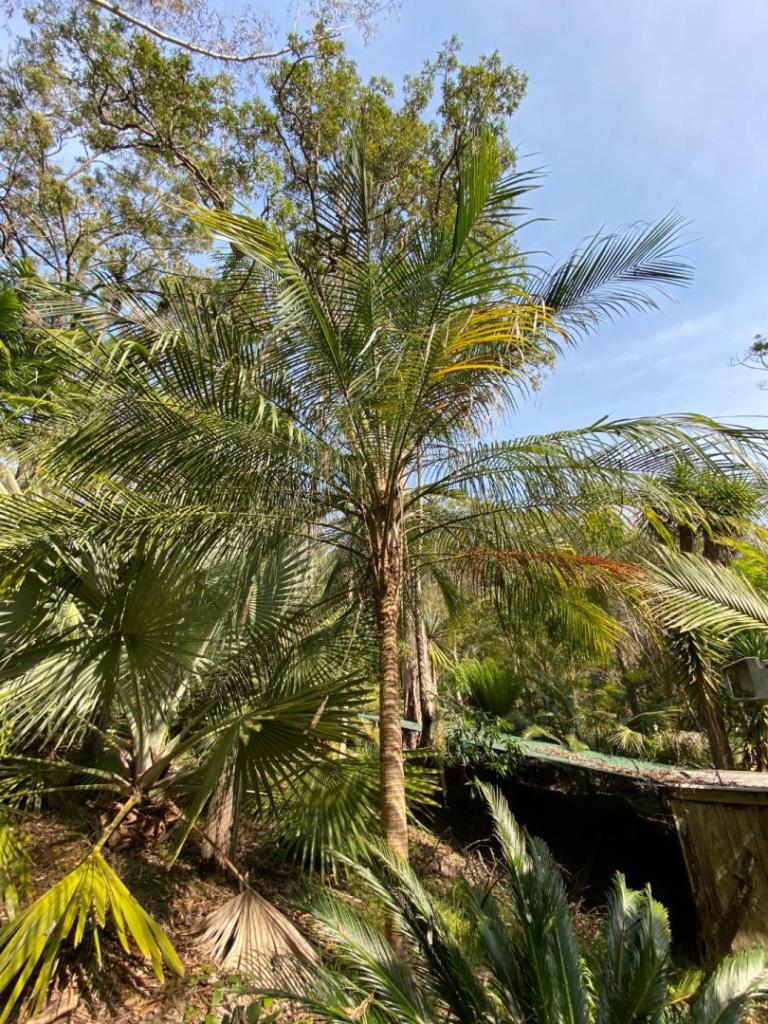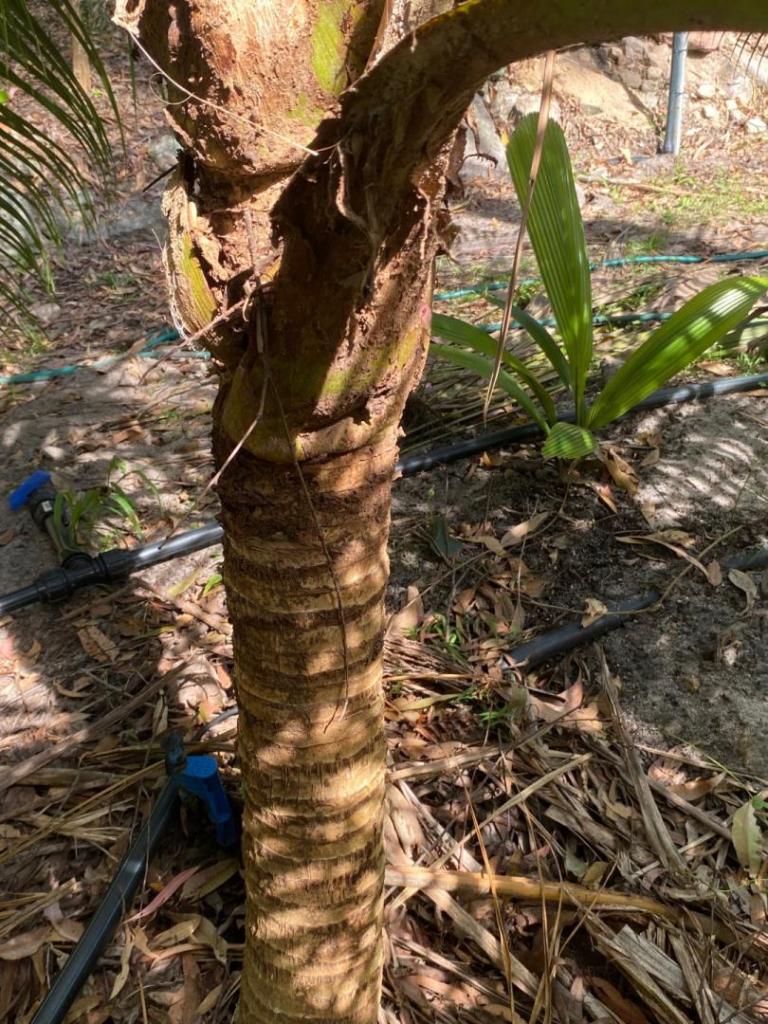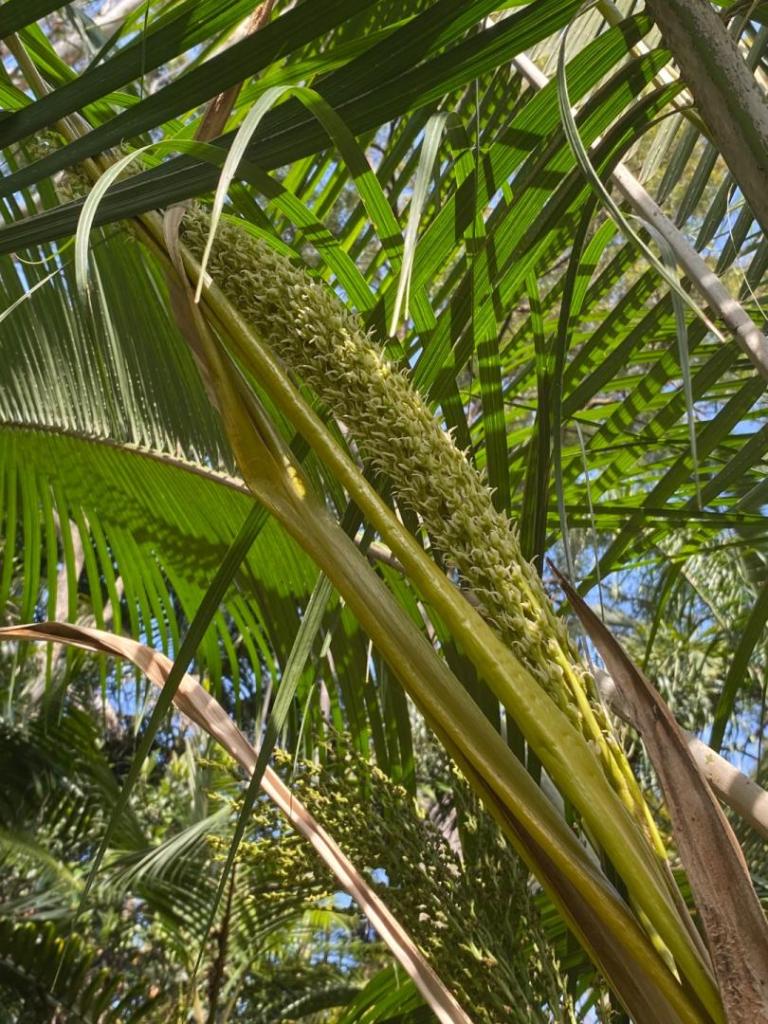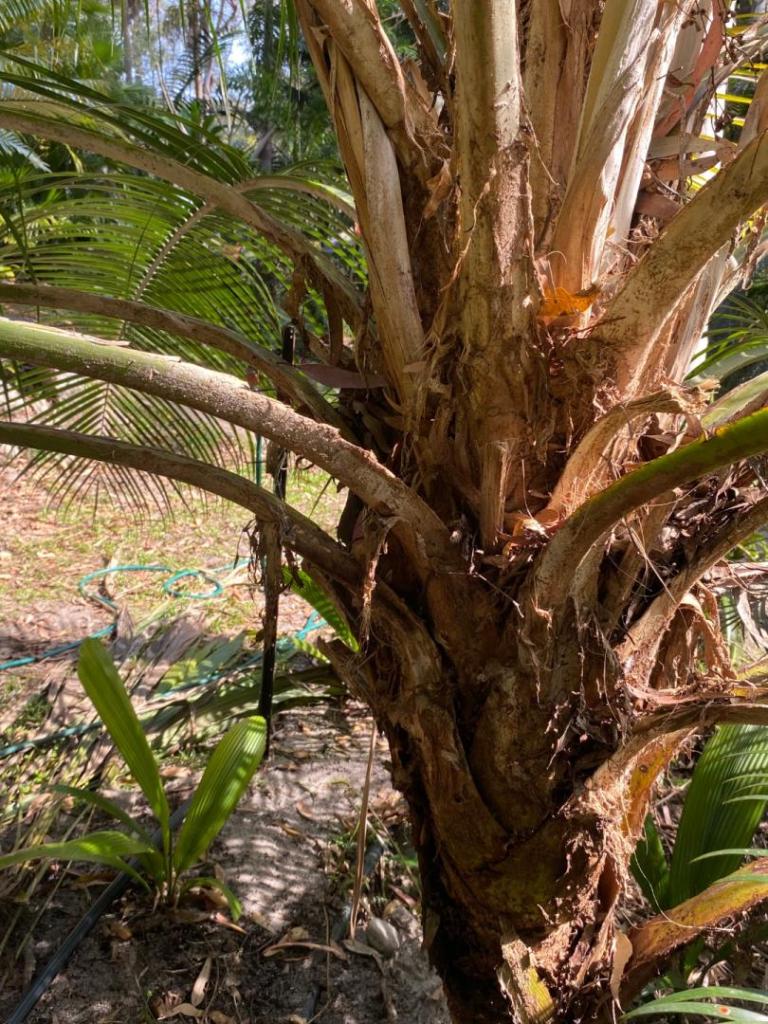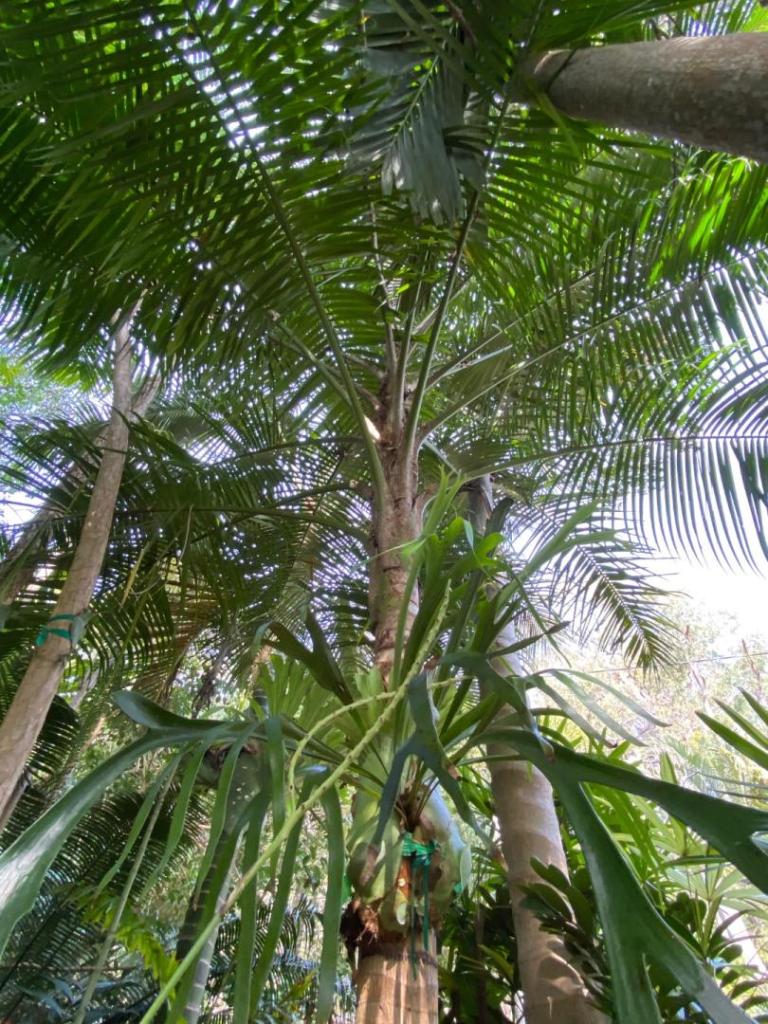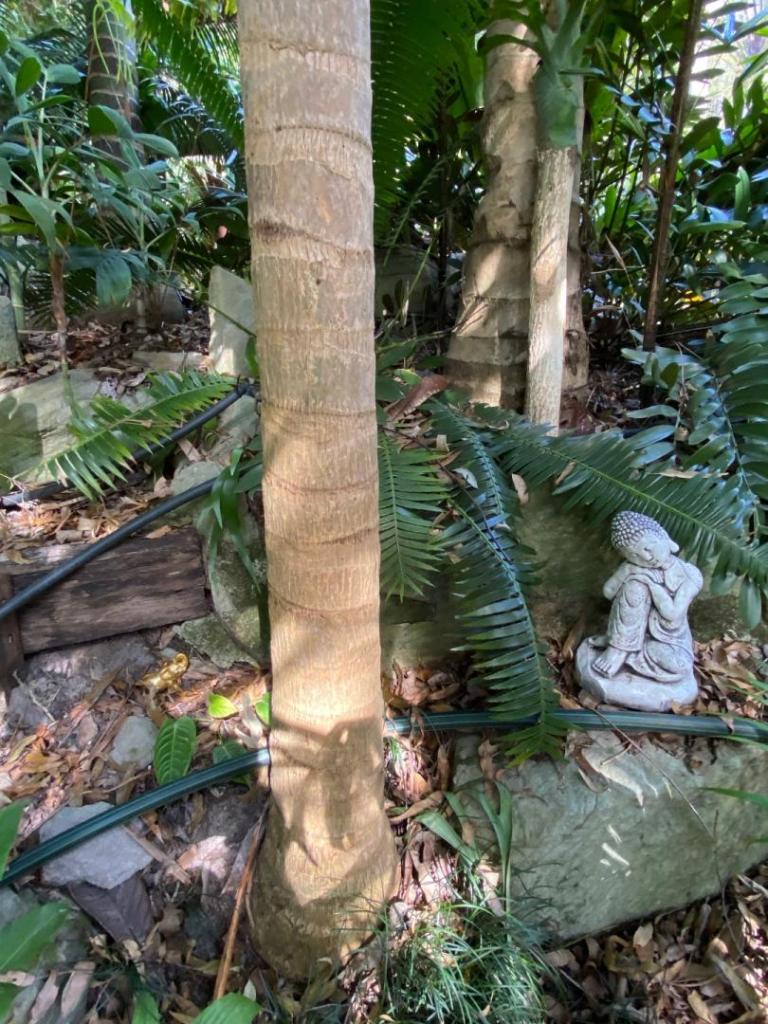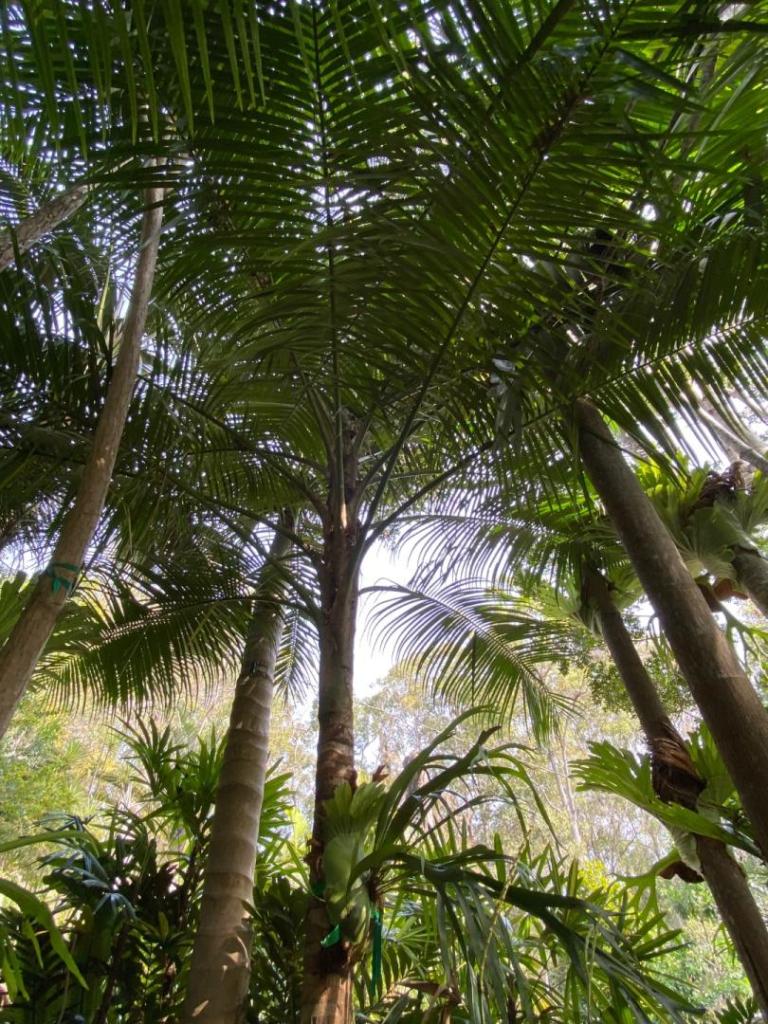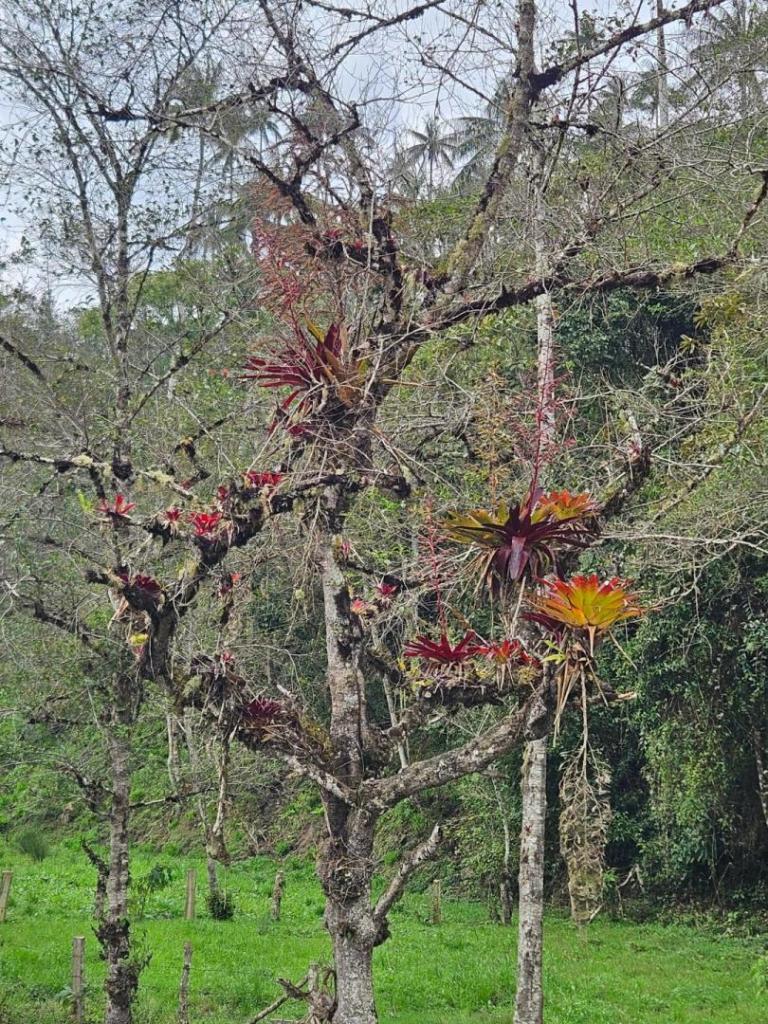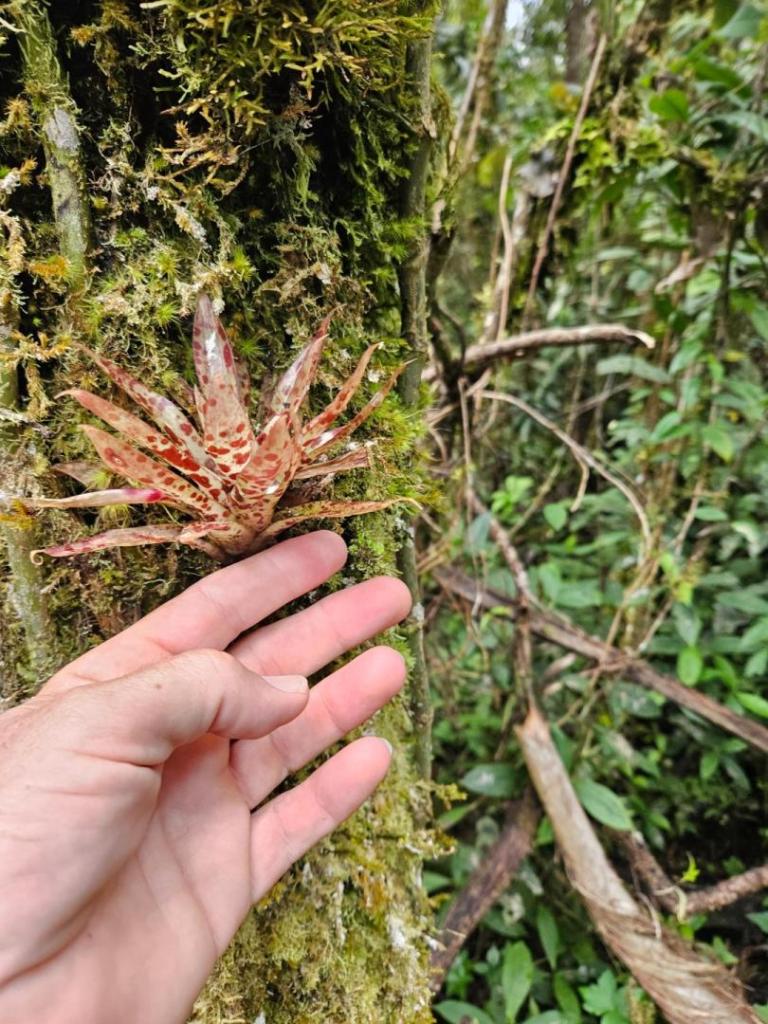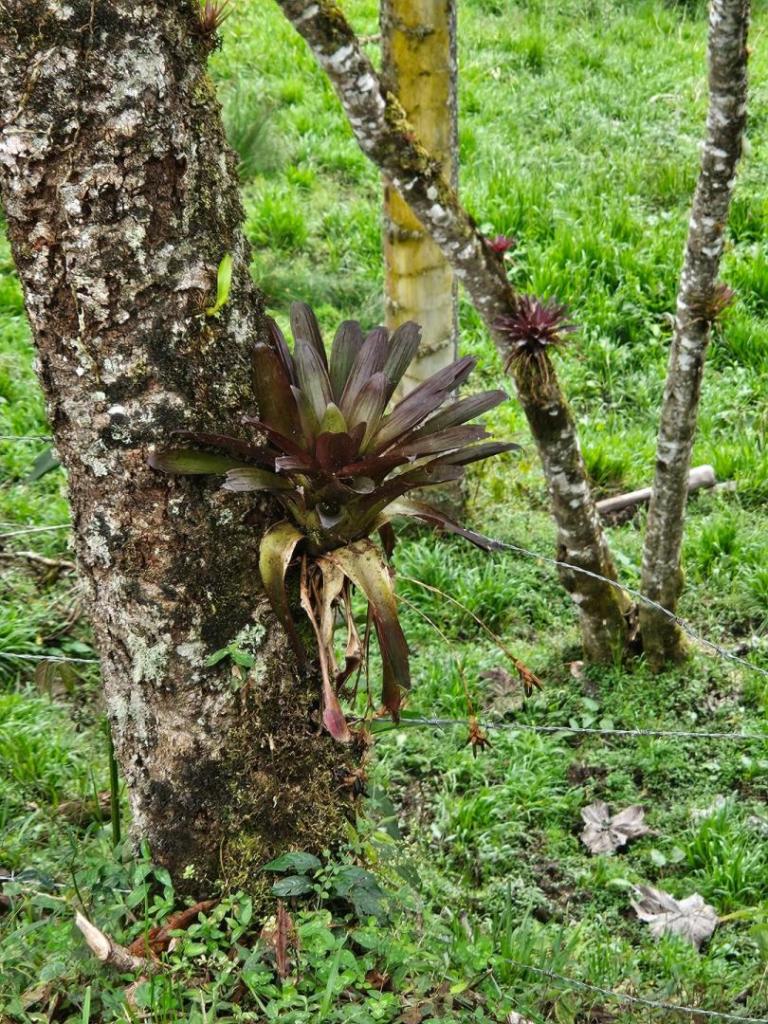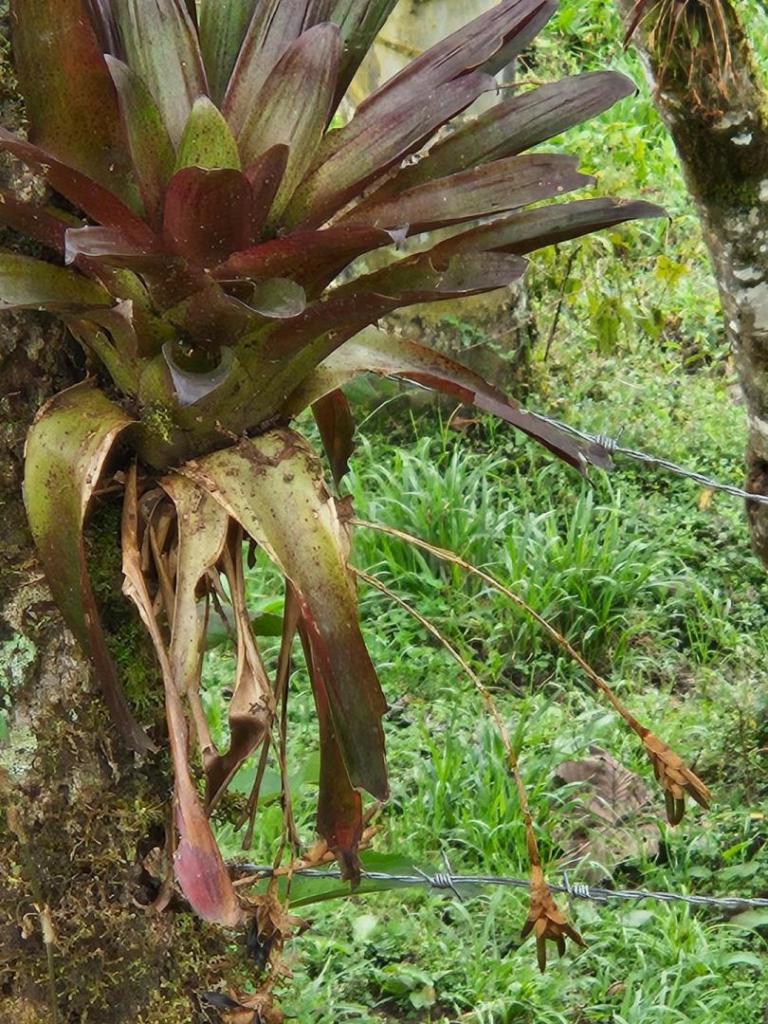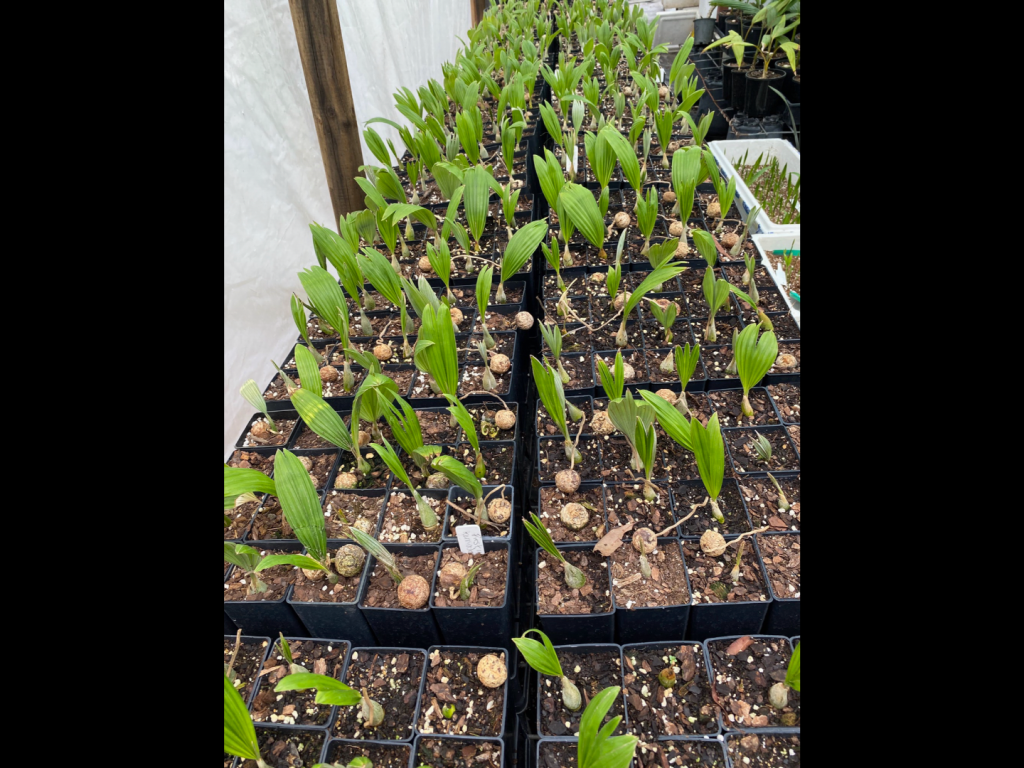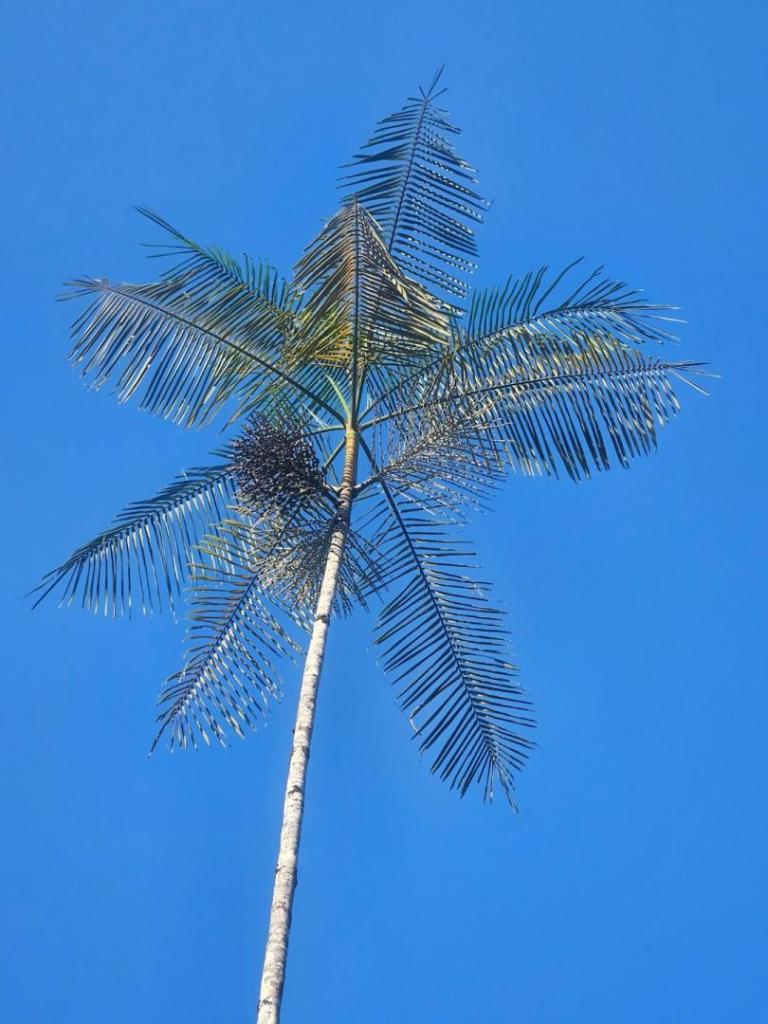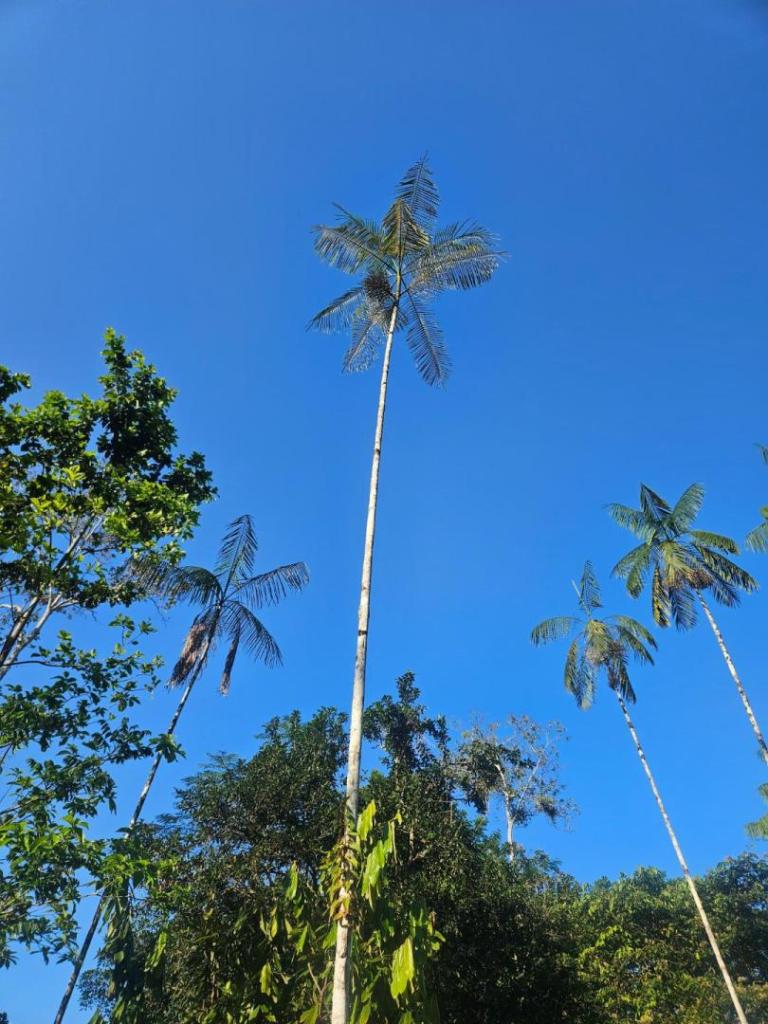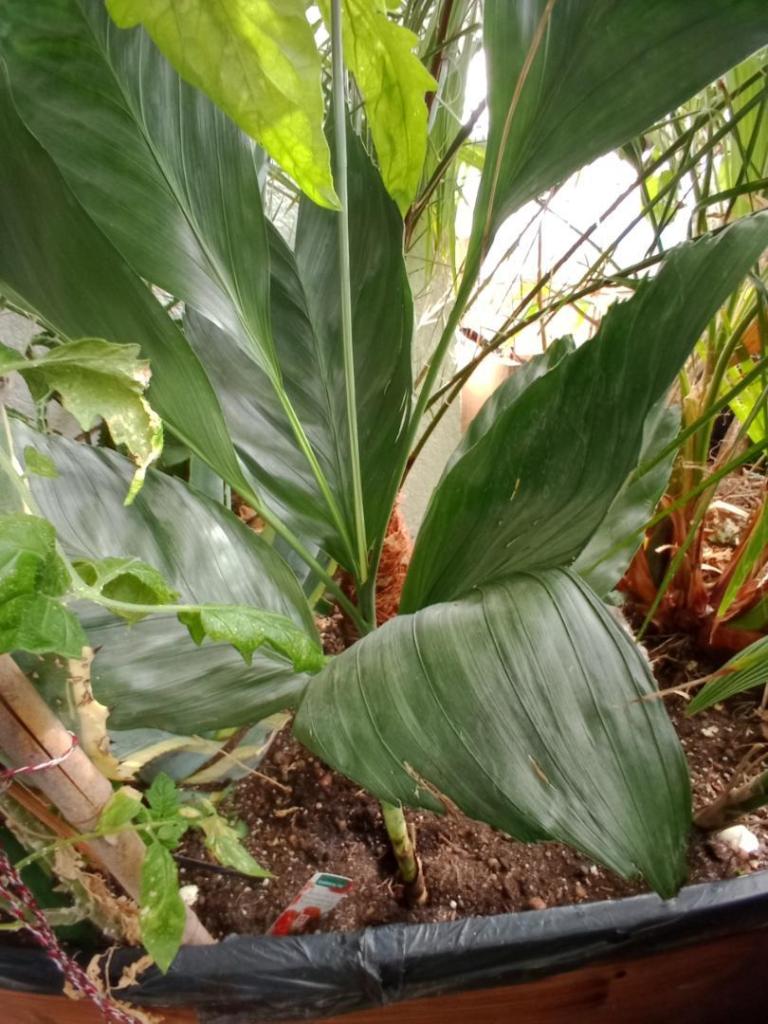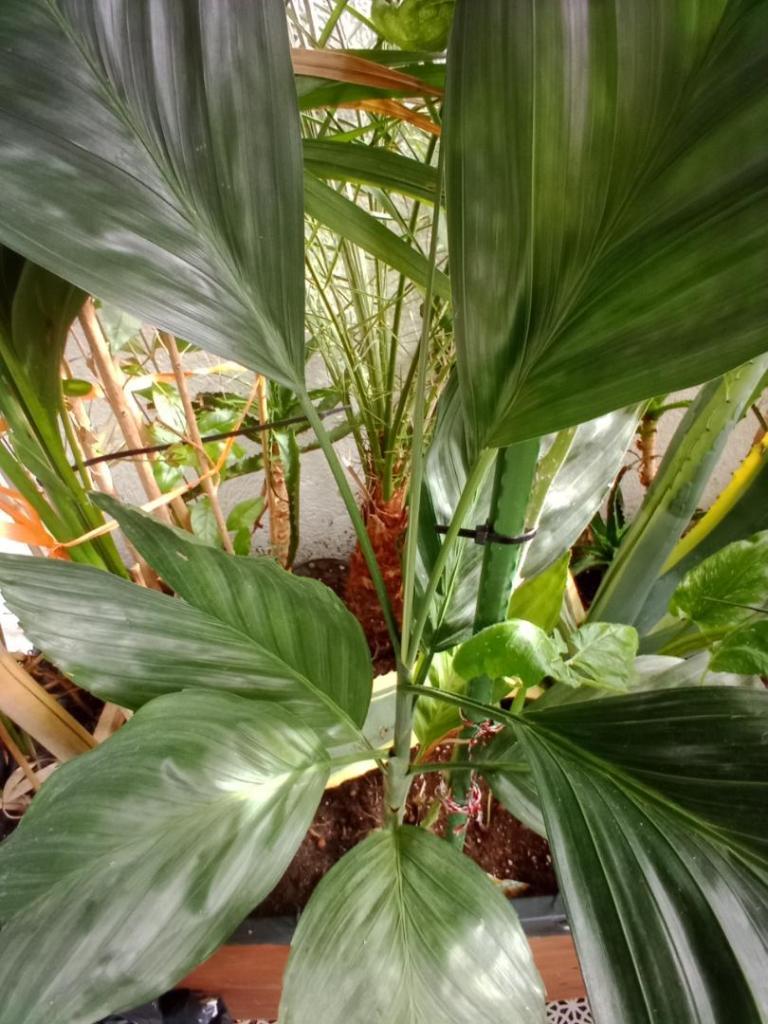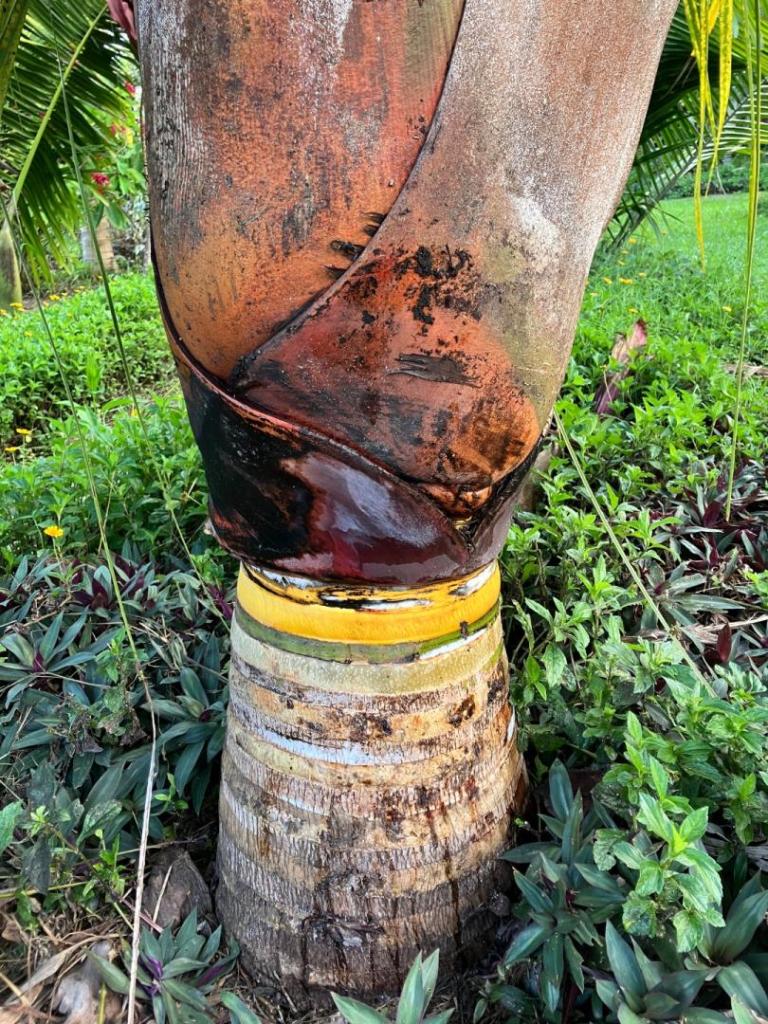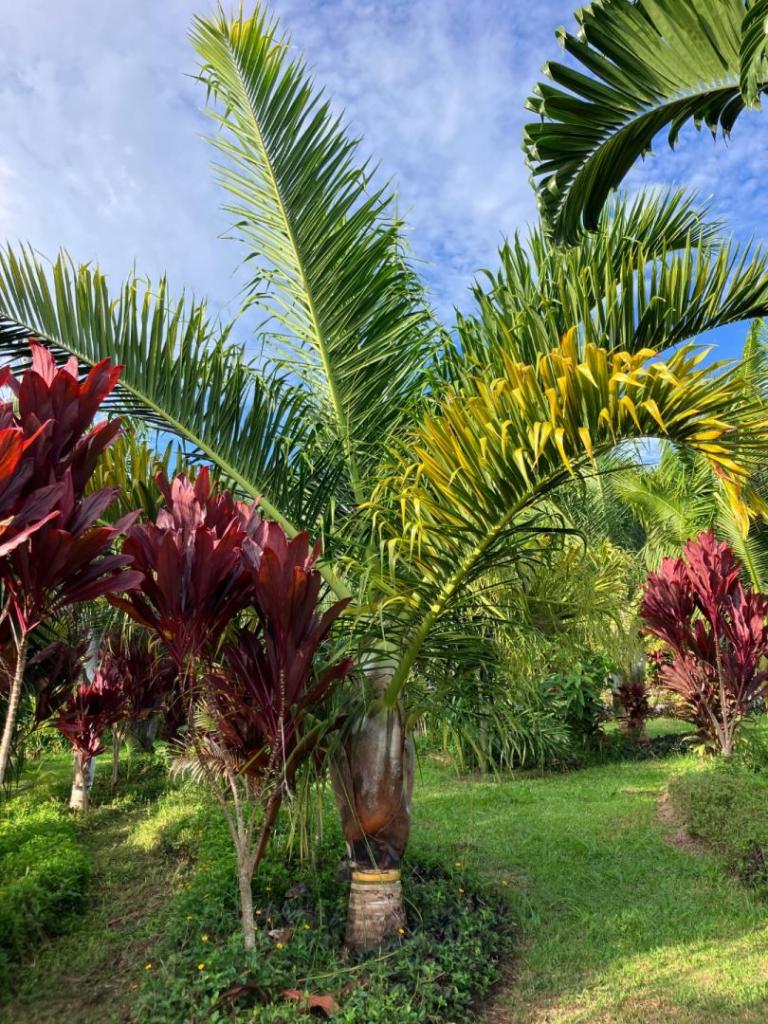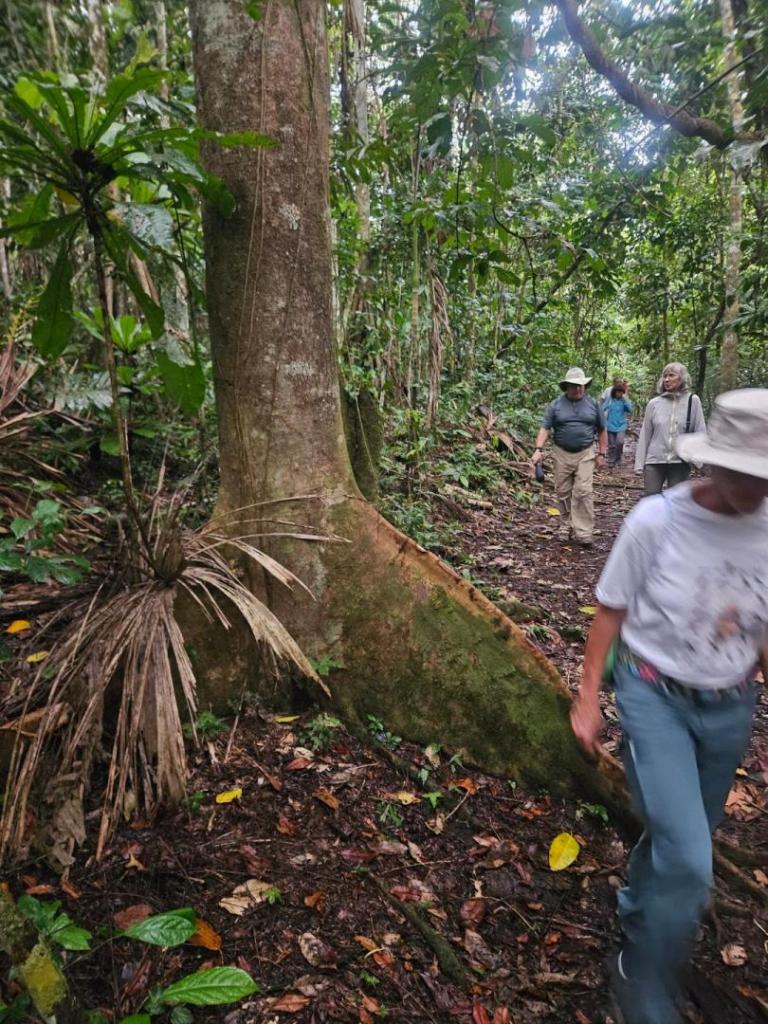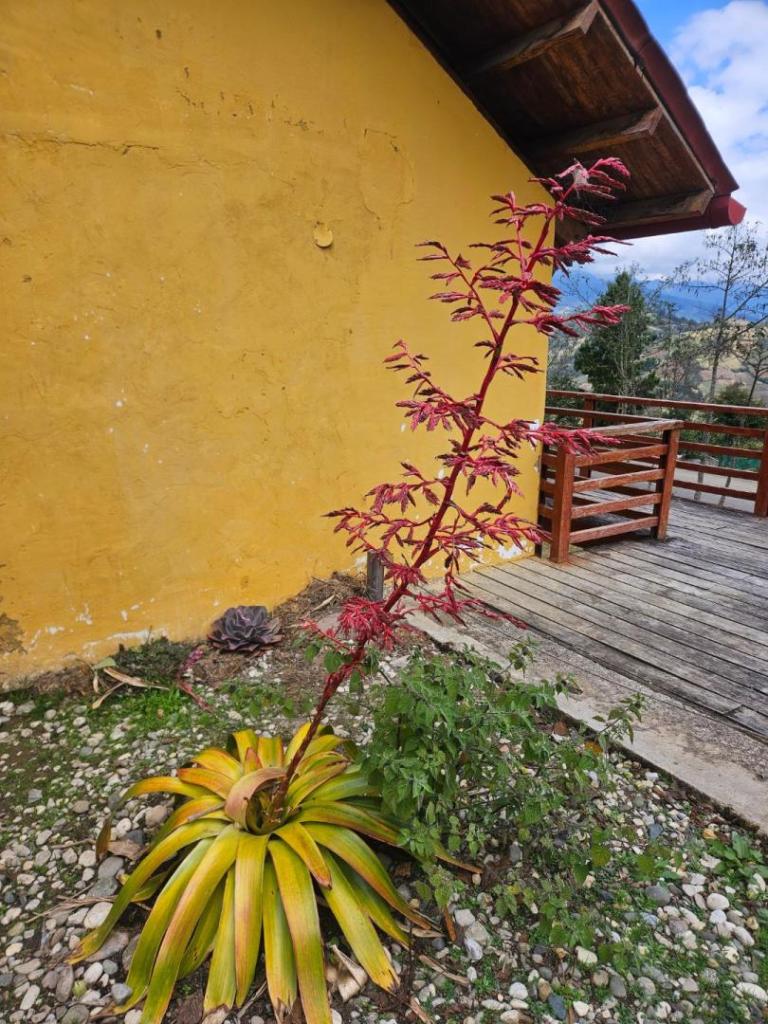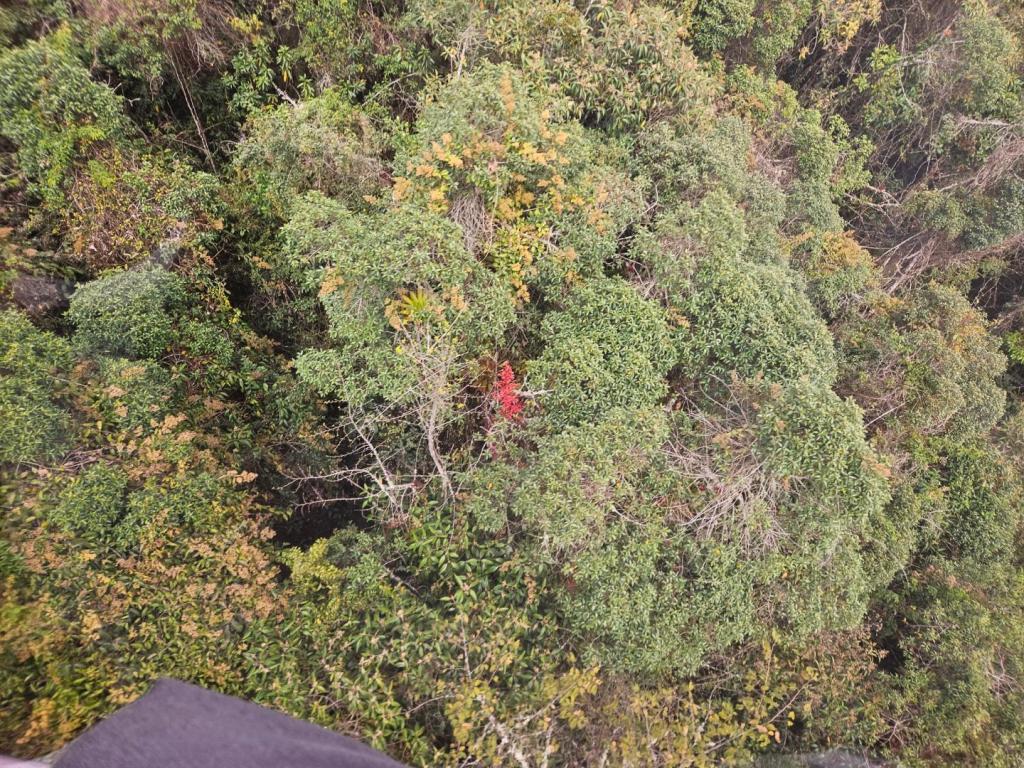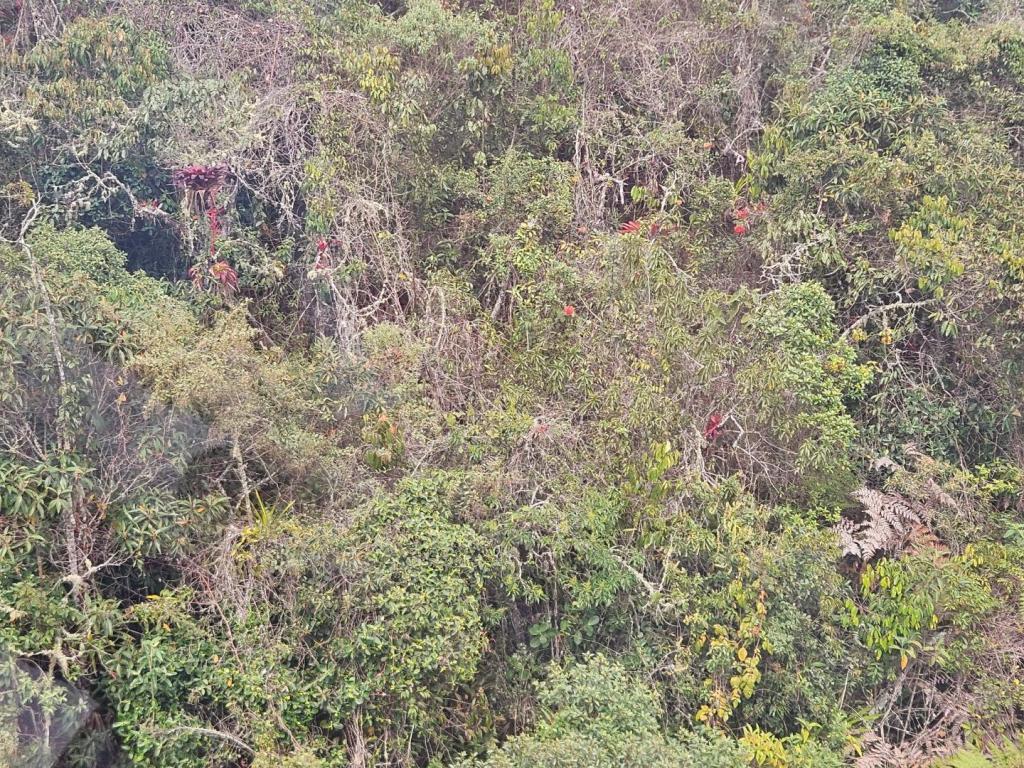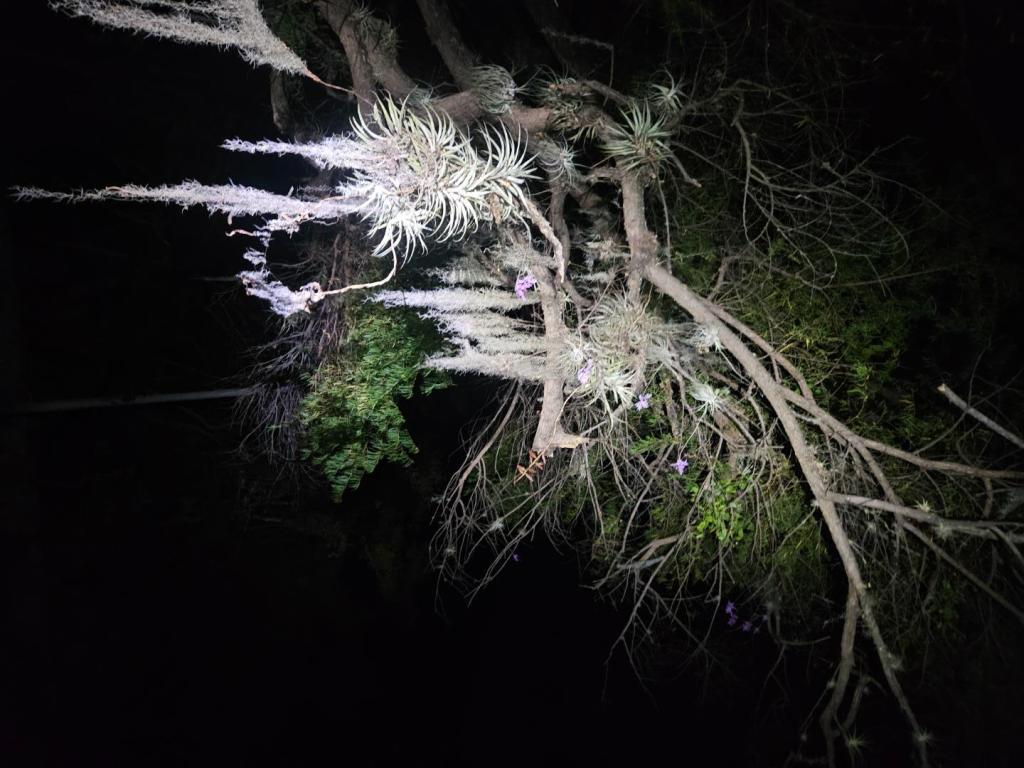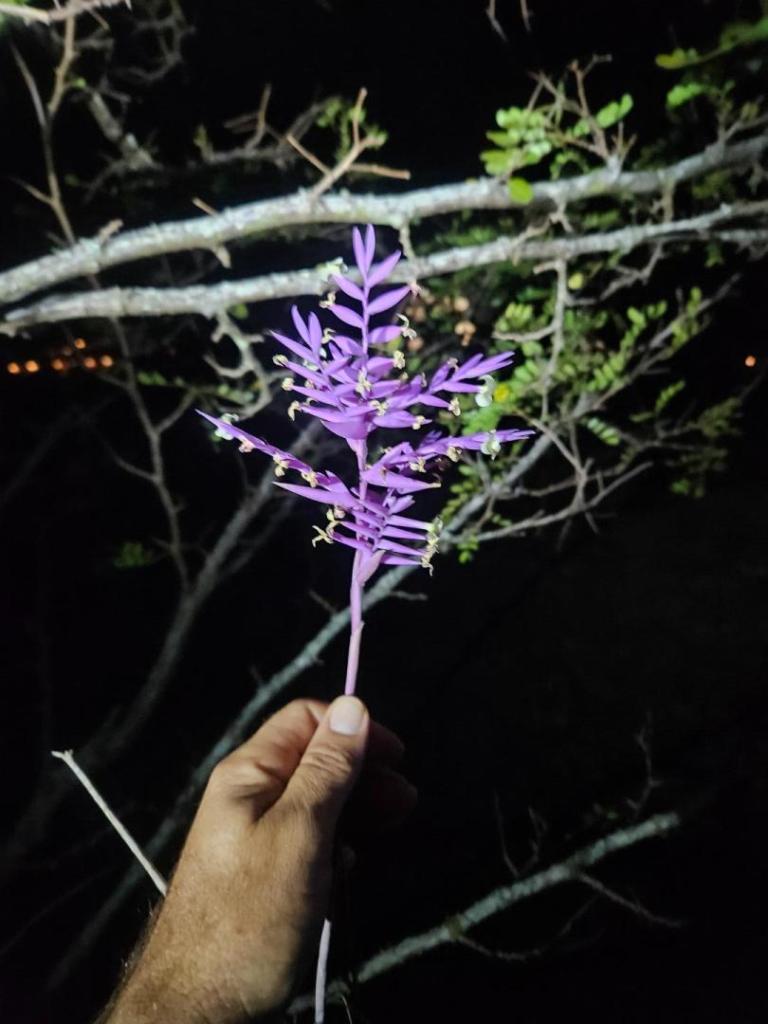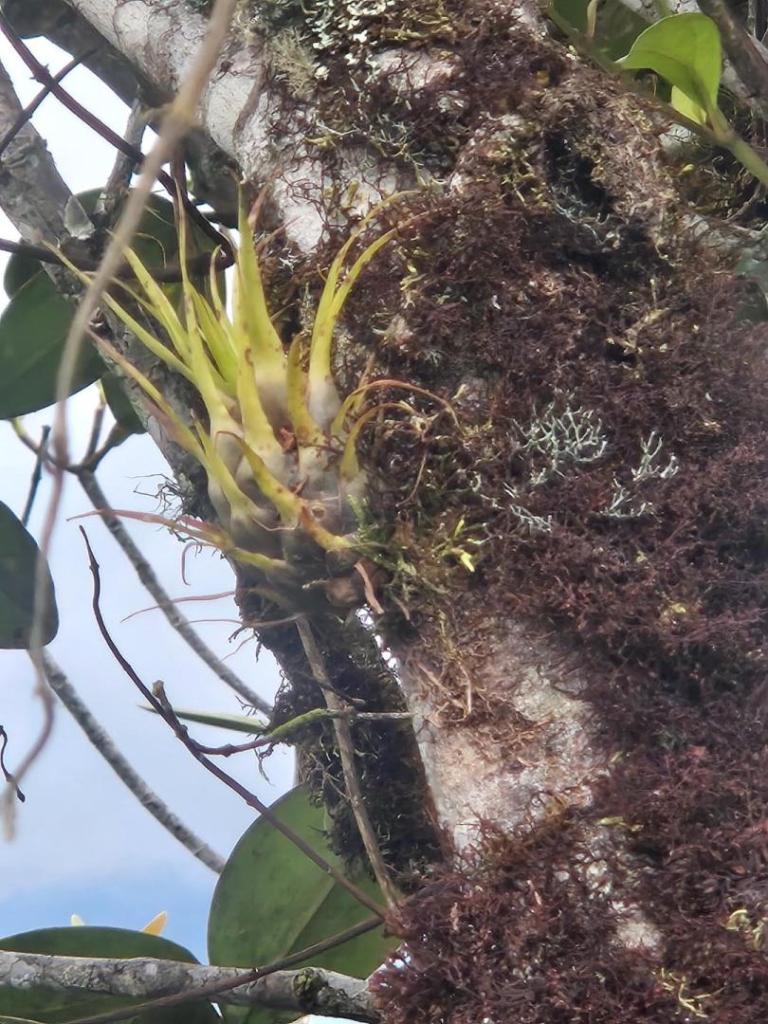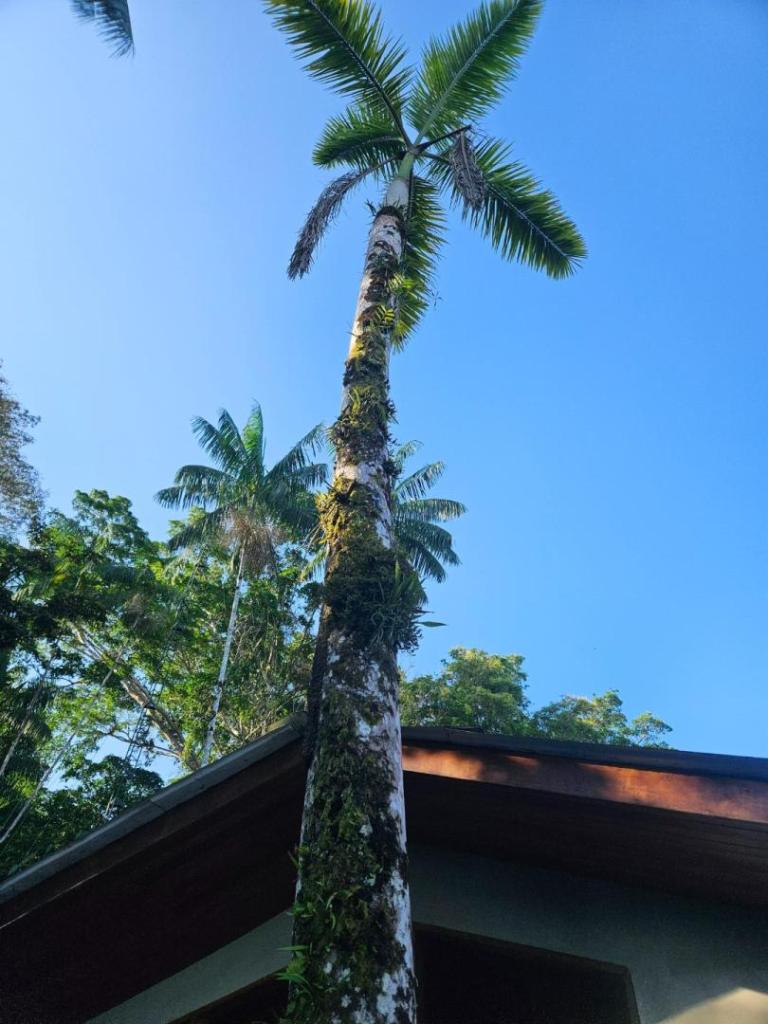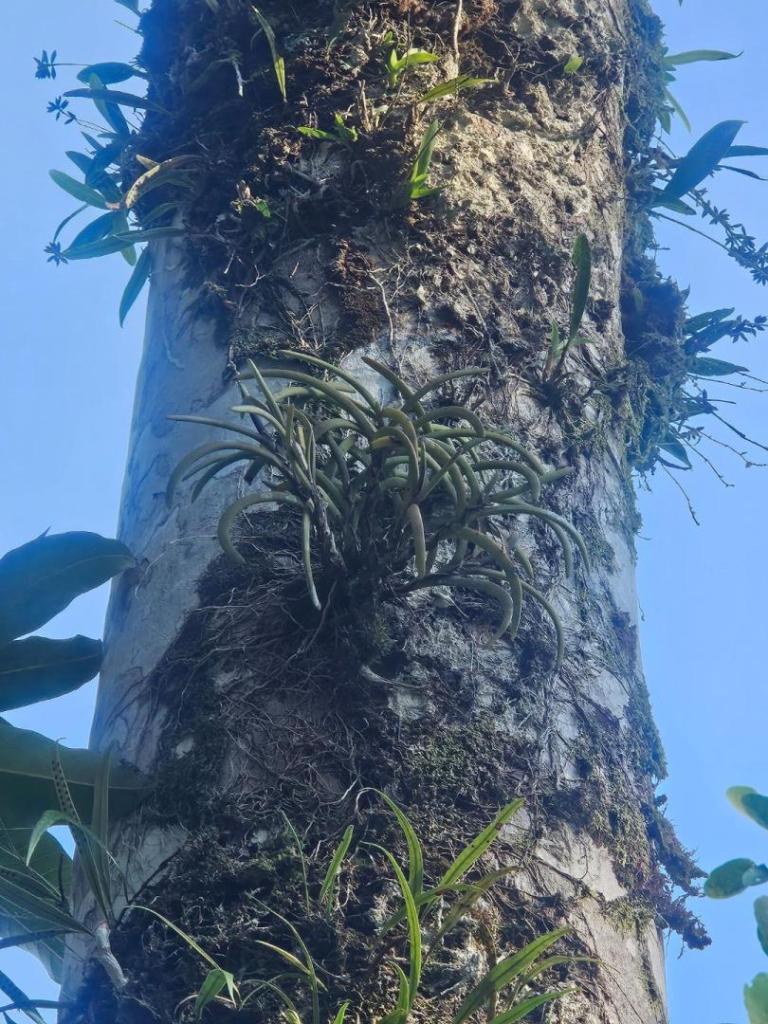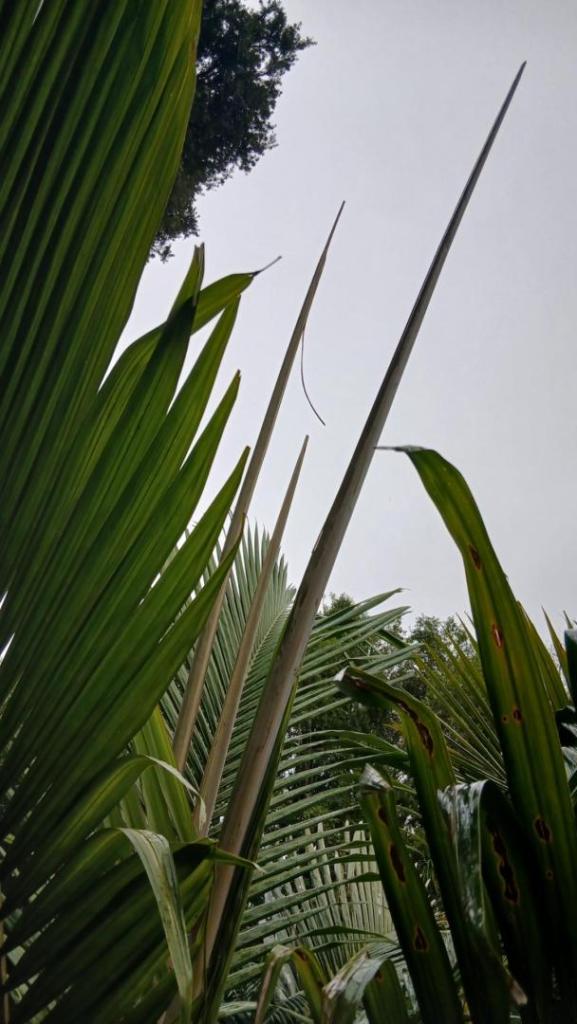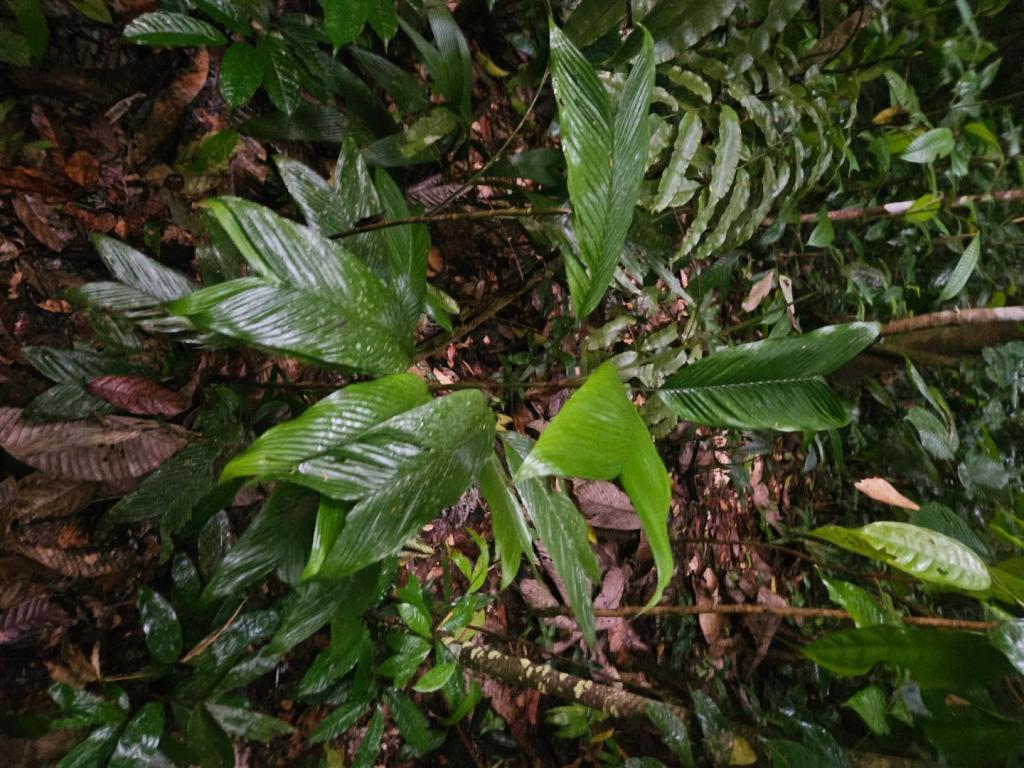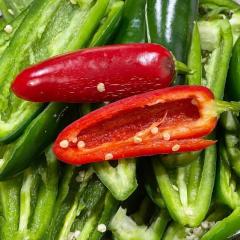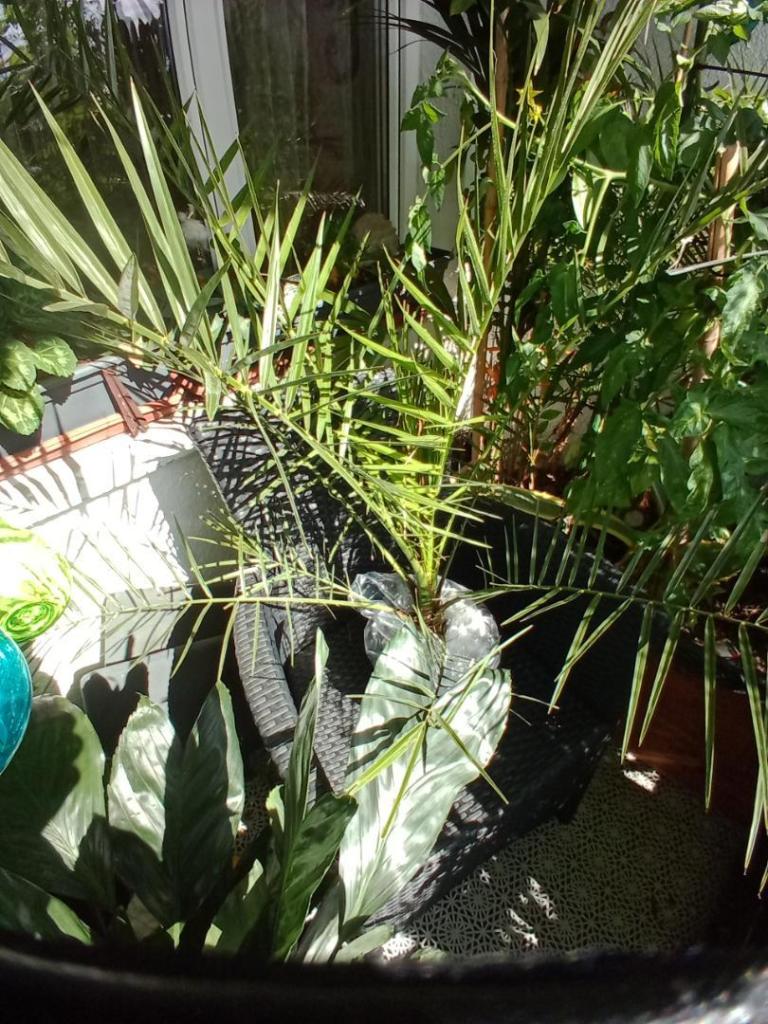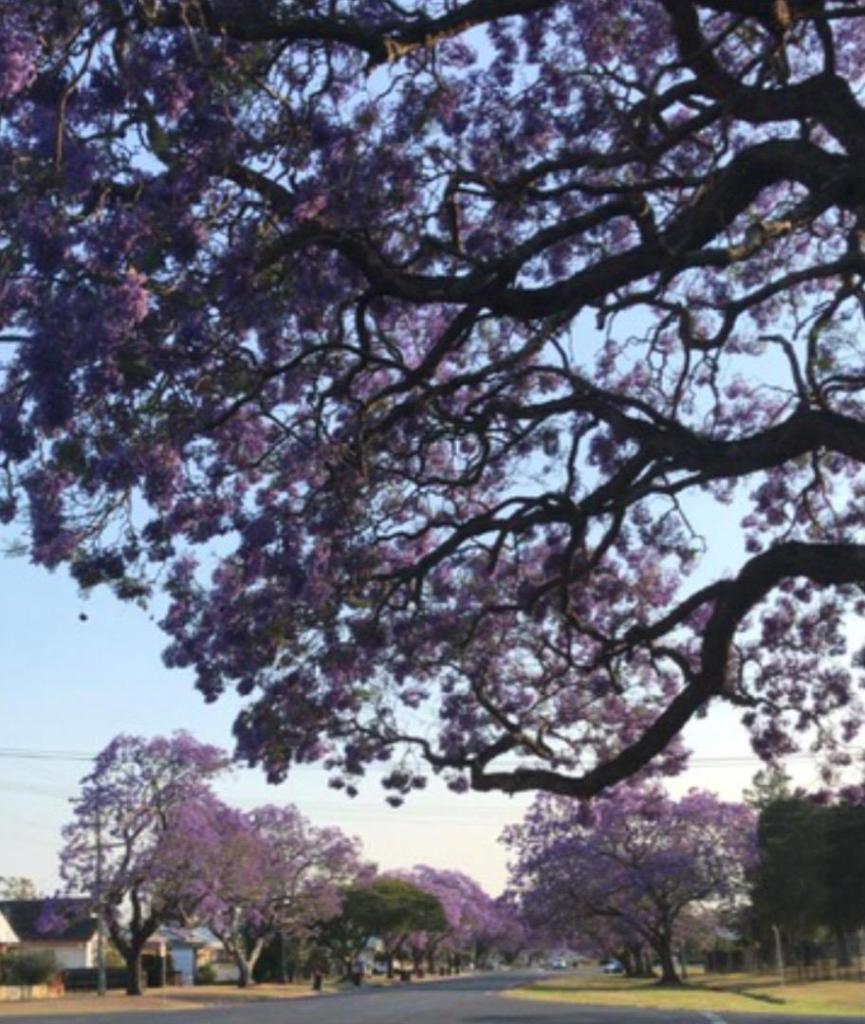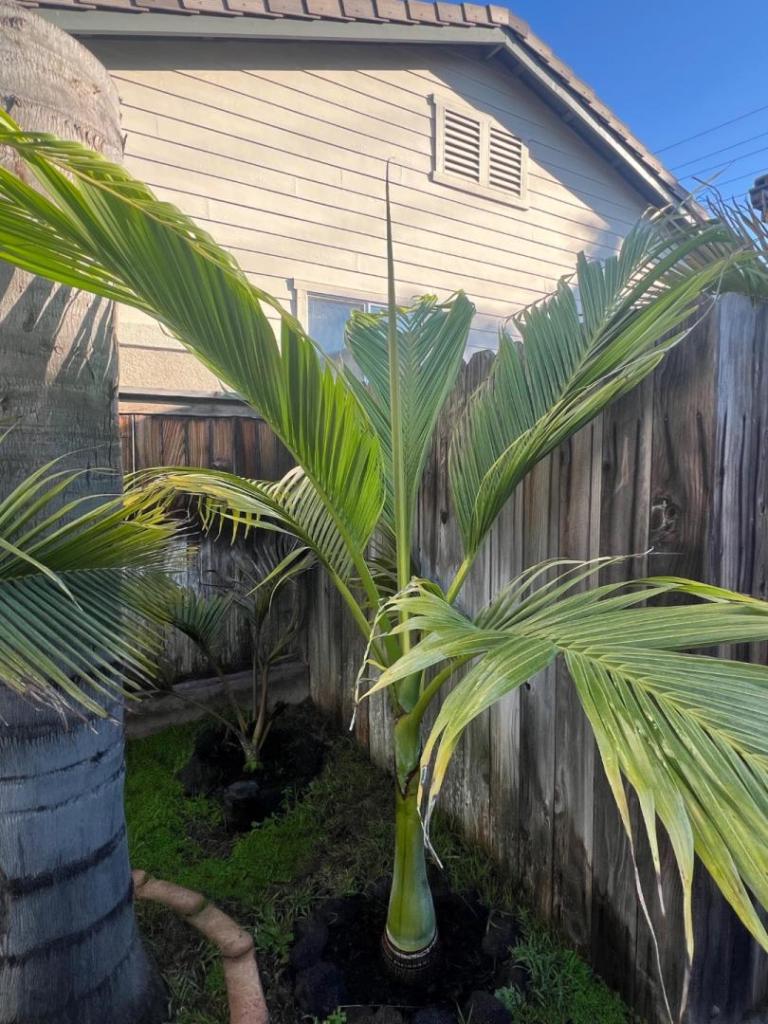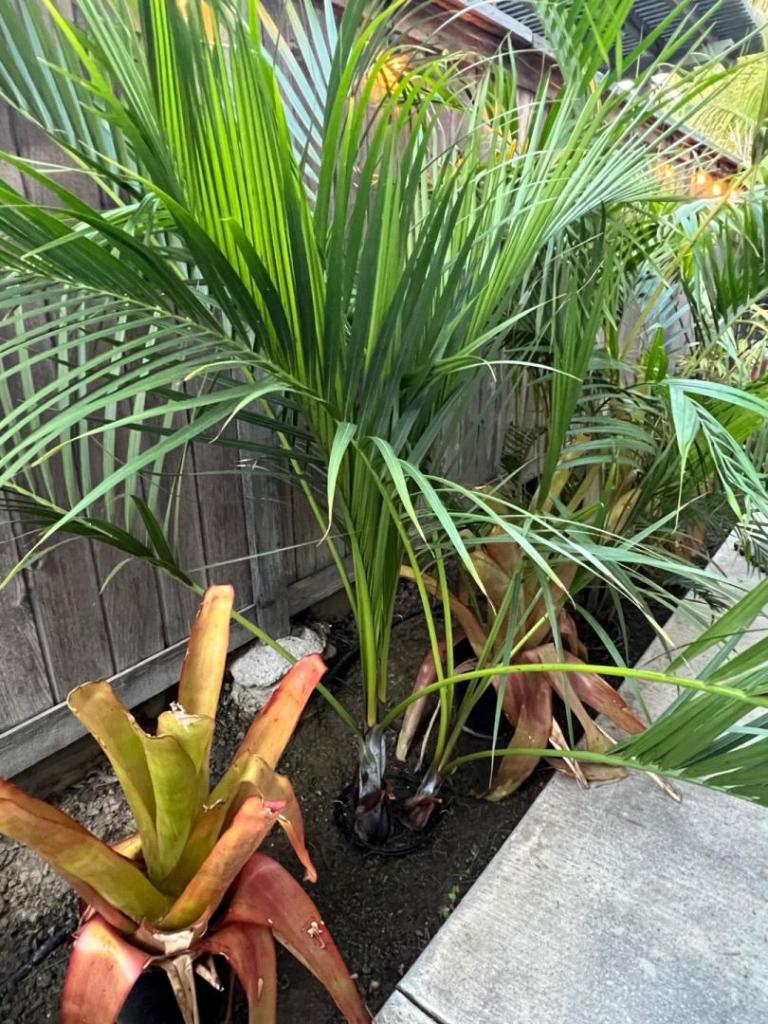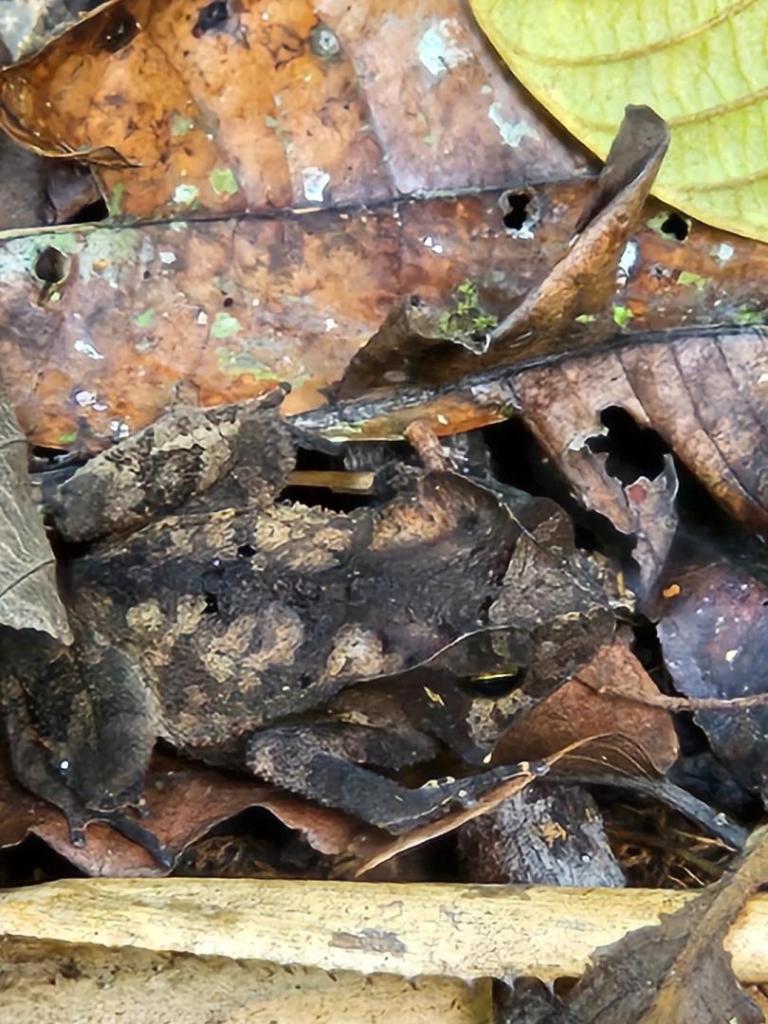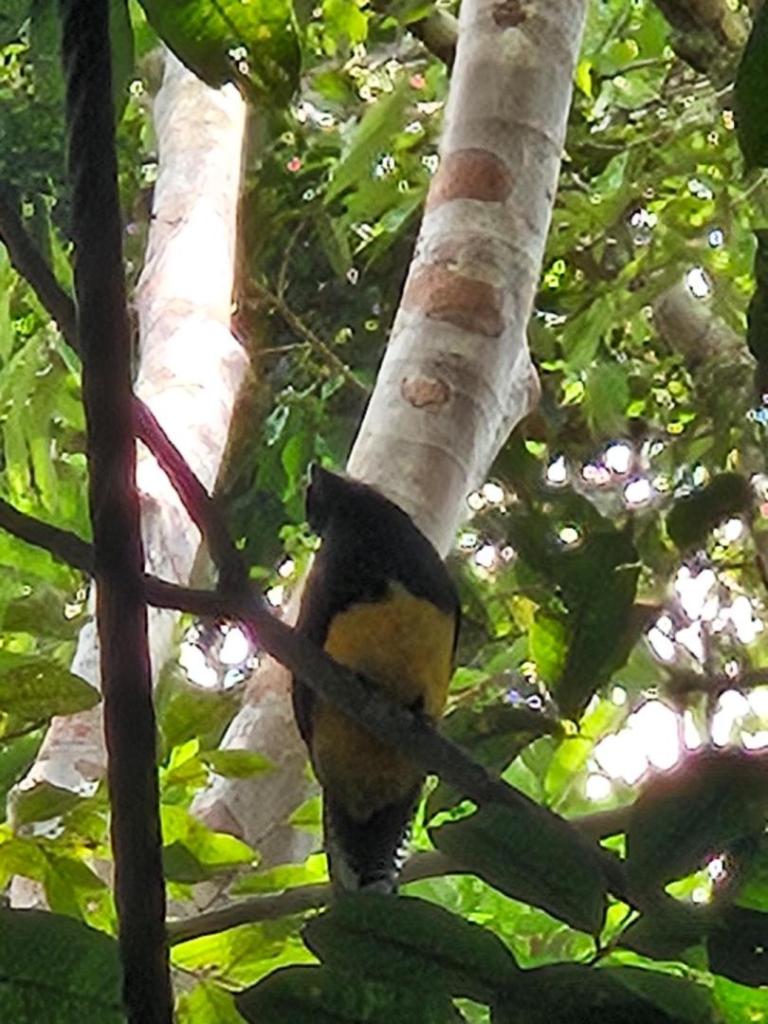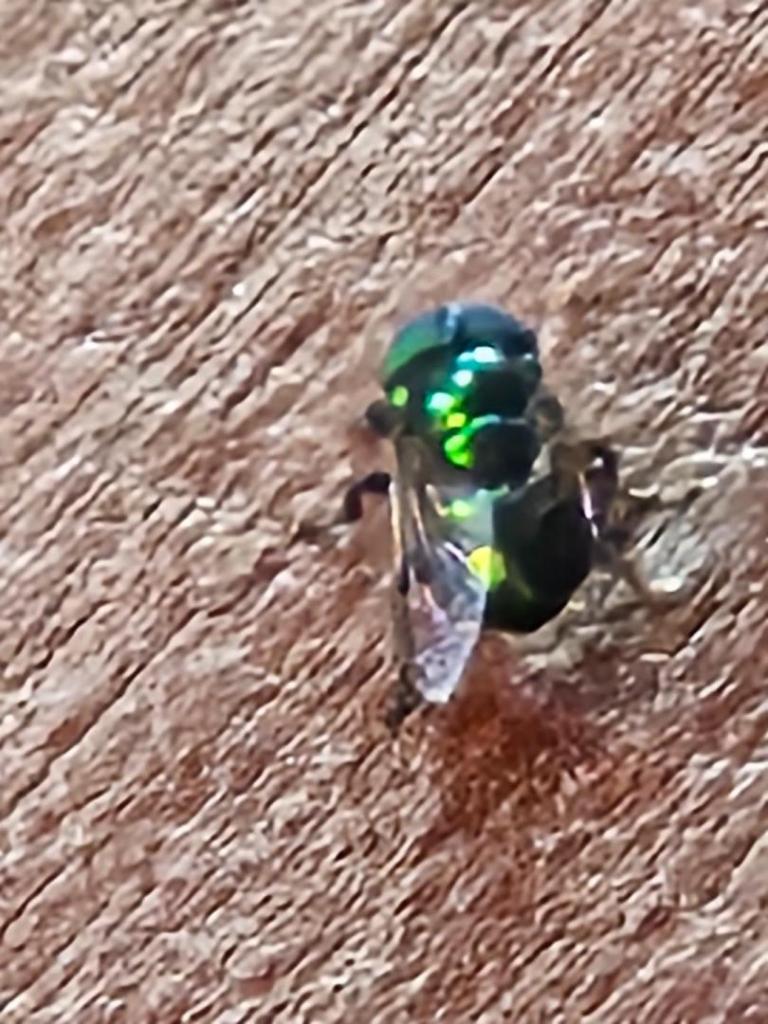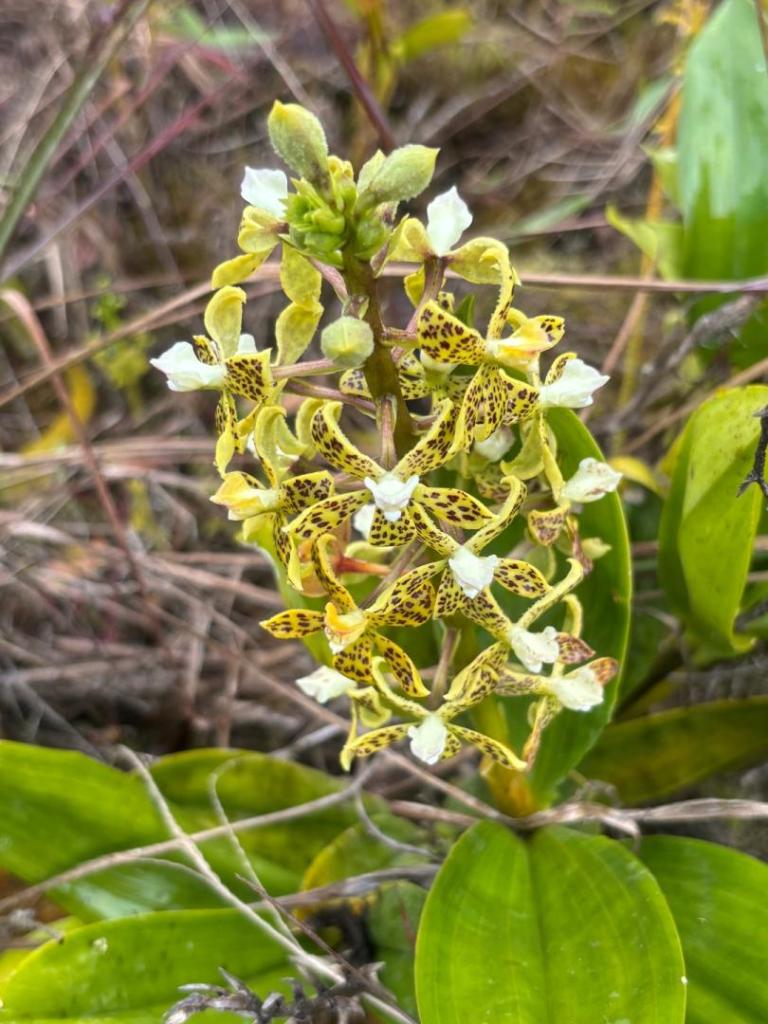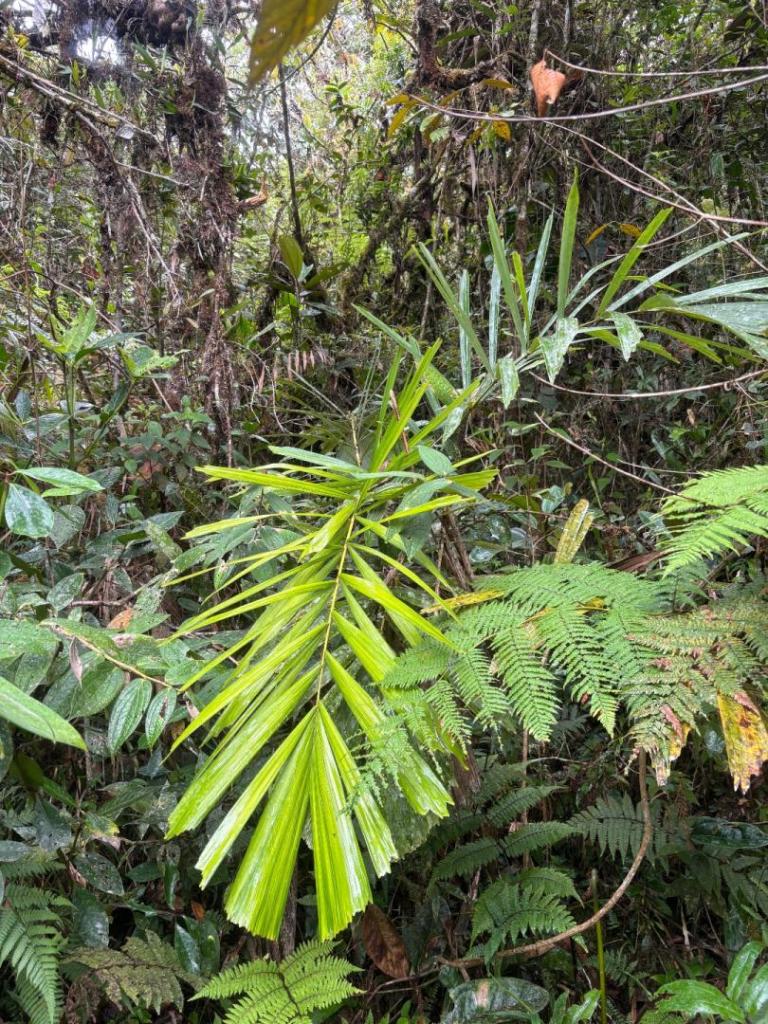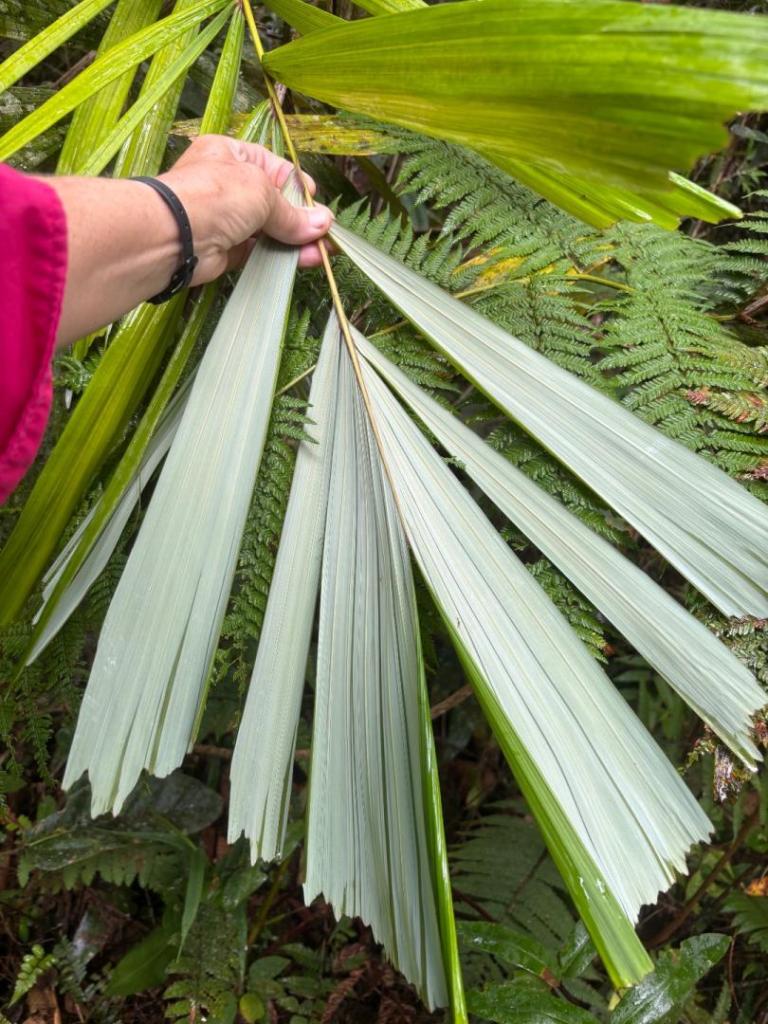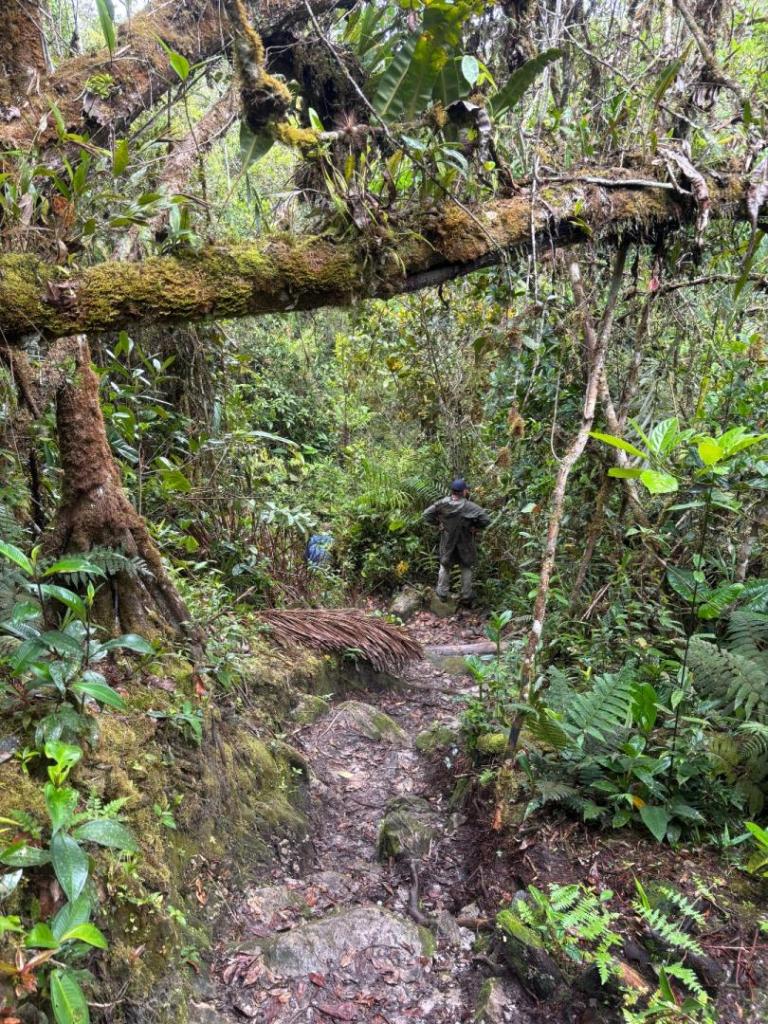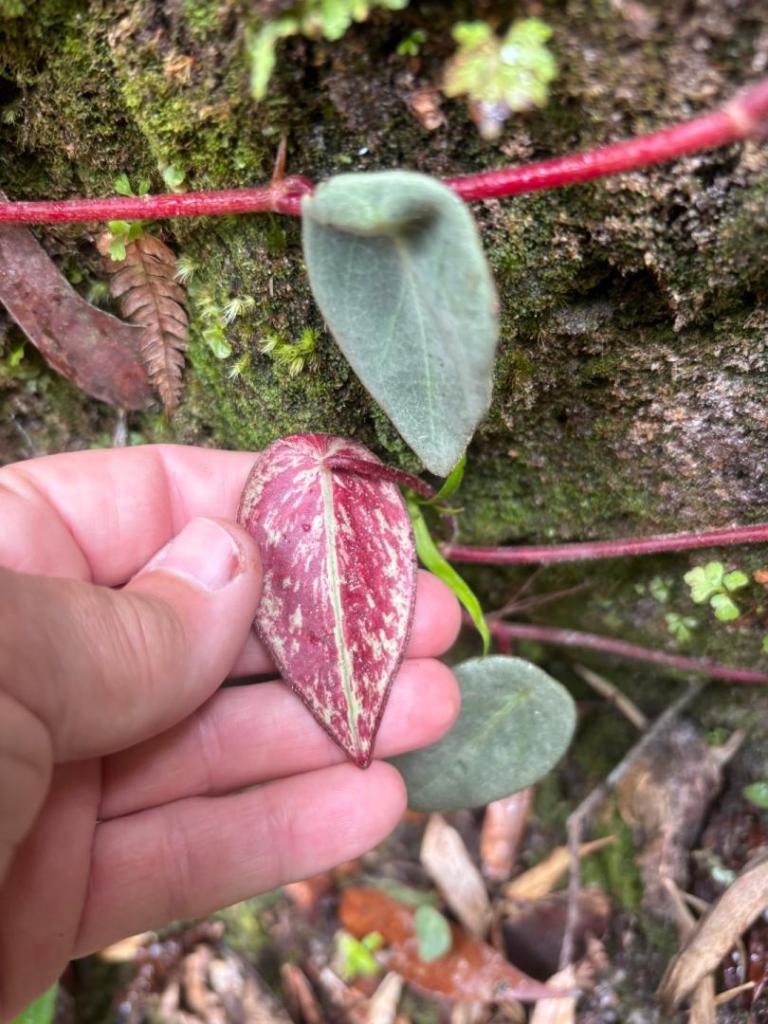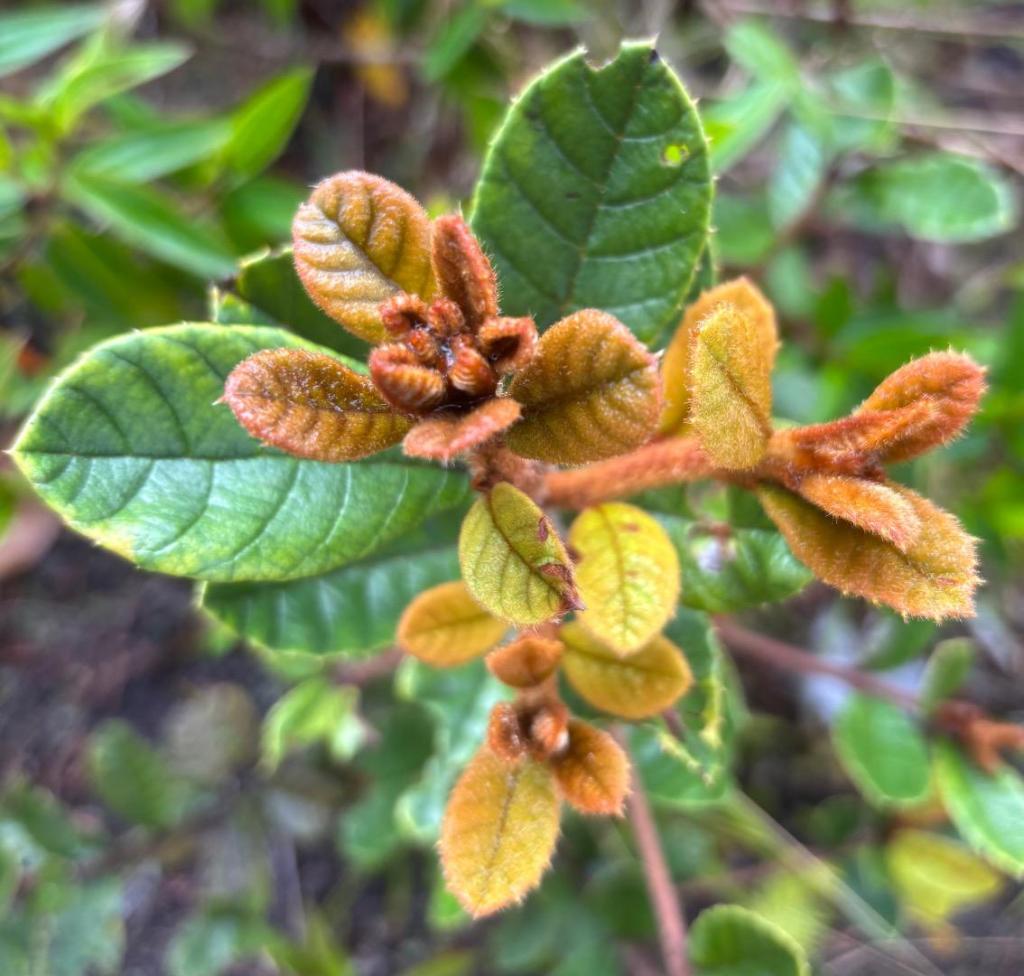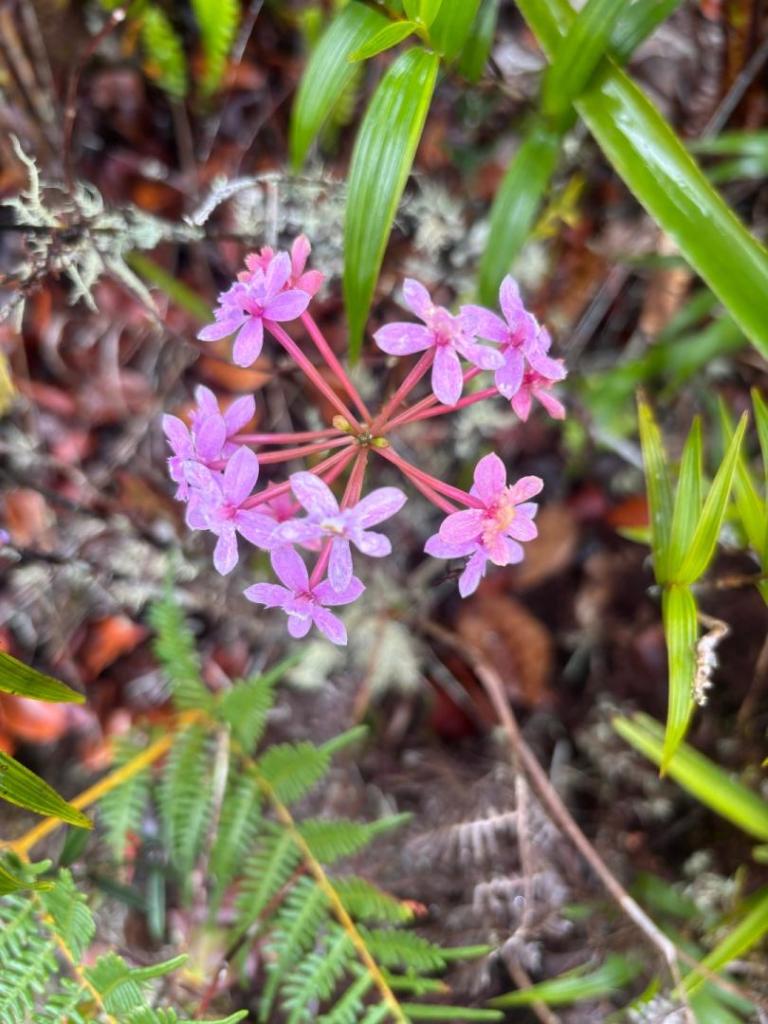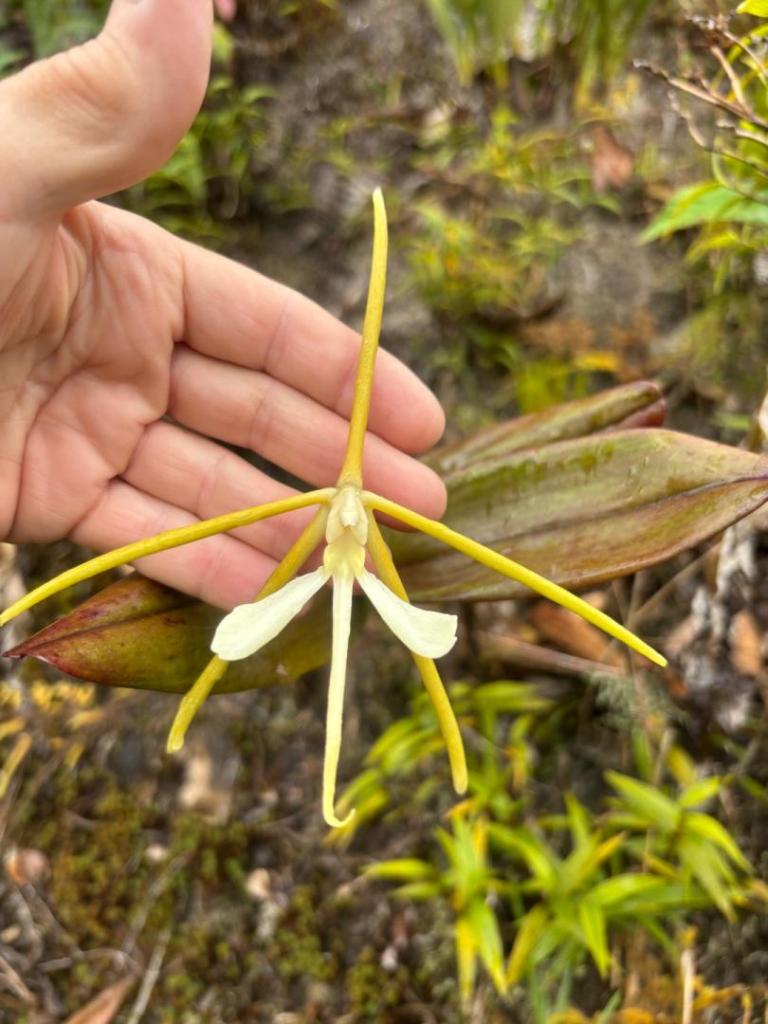Leaderboard
Popular Content
Showing content with the highest reputation on 09/27/2025 in all areas
-
8 points
-
7 points
-
After 22 years, or so, of spectacular leaf spreads I had to say goodbye to my beloved Gigas. Two seed spathes dropped and no growth in over a year. It was time. I used a company called Arkadia ( https://yourarkadia.com/) . They did a great job! Very proffessional, on time, clean and left without a trace.7 points
-
This is our G. undata. It was slow at first, but lately became one of our best palms in terms of leaf production. We are getting about one leaf every two or three months. I got it from Phil at JM and he wasn't sure of the geographic origin, but it's definitely nothing like Darold's and doesn't have the red new leaves (but does have red petioles). Still an attractive palm that seems to enjoy the local climate.6 points
-
5 points
-
4 points
-
The only way I can successfully have that tropical look I want in the garden, and grow the tropical plant varieties that require water is hook up one inch sprinklers that soak the ground and create the humidity required for such tropical plants. Twenty minutes of watering with one will every second day in summer should do the job. I can’t move to Hawaii so I will bring Hawaii to me, the old saying if Muhammad won’t go to the mountain then you bring the mountain to Muhammad! IMG_4216.mov4 points
-
4 points
-
4 points
-
4 points
-
My home town can get a bit cold in winter, so when you look around town you won’t see any tropical beauties like Johannesteijsmannia or Calyptrocalyx growing in town that’s for sure. And by the looks of the palms growing in town there pretty tough one thay can handle very cold temperatures and very hot temperatures up to 42 degrees Celsius. And the foxtails in the middle of the road are living proof of how tough a palm has to be to endure such conditions, not to mention very dry conditions. Way to go city developers you got something right.4 points
-
Hey Tim, good timing as I was just sending a Geonoma photo to Perito here on PT. The Geonoma in the first few photos of this thread perished years ago and I’d forgotten all about them. They petered out as they got about 3m tall. John Hovensek gifted me a little Geonoma seedling about 18 months ago, species unknown, and it’s finally growing into a nice specimen with the salmon colored new leaf. Here is a photo of the ‘unknown’ Geonoma and one of the grouping of three G. atrovirens. Hopefully Steve will chime in, but G. undata might be a good choice for you based upon Darolds experience in the Bay Area that we’ve been swooning over for years now. Many Geonoma don’t take up too much space and would fit nicely in your garden. You might have to keep experimenting with cold hardiness though. Tim4 points
-
3 points
-
Most all of us have a hybrid of some kind - mule palm, foxy lady, etc. These are crosses from different genera and grow fast. Then there are crosses involving different species from the same genus such as the coconut queen, tribear and these have some hybrid vigor also. I'm curious if these hybrids show less vigor than the hybrids of those from different gernera or is it the same? And what about hybrids of dioecious palms like Phoenix? Does that make a difference? I'm currently growing a couple of Phoenix hybrids and they don't seem to be growing any faster than their parents. I recently obtained a Trachycarpus wagnerianus x fortunei and I wonder if that is even considered a hybrid because wagnerianus isn't considered a separate species but rather a different form of fortunei. Anyone have any thoughts on this?3 points
-
3 points
-
Back in May of this year I felt well enough to go out and take photos of palms in our Garden Lot. I got them named but had a relapse of pneumonia so they have been stacked up on my desktop awaiting posting. Now fall is on the way I decided to post them, then stash them in my 2025 Palms Folder 1. Cocos nucifera Dwarf Red Spicata flowering/seeding. Did you know coconut seeds take 2 years to ripen? - vast majority abort. 2, Carpoxylon macrovperma (far left) overlooking Isabelle Canal 3. Coccothrinax cupularis 4. Coccothrinax proctori i 5. Cocccothrinax sp 1 6. Coccothrinax sp 2 7. Coccothrinax sp 33 points
-
3 points
-
3 points
-
3 points
-
Here in Southern California they rarely need fertilizing . Hopefully it will grow out of its current condition . I am one who thinks they are beautiful palms . Just be prepared for the mess they create when it matures. Harry3 points
-
Kudos to the grad student for her research and substantiating DNA analysis. https://gradschool.cornell.edu/spotlights/student-spotlight-ayress-grinage/3 points
-
3 points
-
A subtropical climate, there is plenty of rainforest in my area and pockets of them, creeks lined with rainforest. But yes the gum trees are a moisture drinking curse for me they store so much water and drink so much water, if I was to bring out the chainsaw there would be a lot more moisture in the soil. But I have created a rainforest jungle garden it can be done amongst the gum trees.3 points
-
I don’t believe that’s correct maybe the outer desert but in right in the middle if that was correct we wouldn’t have queen palms and Mexican fan palms I say the lowest is 20 degrees3 points
-
3 points
-
The other week when I was in Sydney, I was talking with another palm grower who knew his stuff well. And one of my questions I asked him which I thought was a cold problem was more than just cold, it appeared to be a fungal disease that was systemic. I did get a helpful answer to solving this problem. Which was great to be able to ask someone who had a different opinion on the subject. That is what I like about palm talk you just never know what you learn until you learn it. Richard3 points
-
It may be outgrowing cold damage present prior to planting. It's too late to plant another this year, so maybe some H2O2 for now.3 points
-
This is one that I got as a 25 gallon box push pushing 20 years ago. I’ve always guessed that it was relatively “pure”, as it maintained fairly narrow trunks. My friend got one from the same grower that was clearly crossed with canariensis, and just turned out to be a monster. It obviously wants to suck her a lot, but I do my best to keep it whacked down to a half a dozen stems. It’s topping out it 6 to 7 m and puts out just a ton of growth pretty much year-round. Although I’m not sure I’d put in another one, as this one went in pretty early in my palm journey, but they are lovely palms. Except the spines, could do without those.3 points
-
Argh hybrids why hybrids, yes I have two in my garden and that was only due to the fact they snuck into my collection unnoticed. Would I ever really be into them in a big way not really. Iam against hybrids for obvious reasons, yes Mother Nature does create her own in certain places in habitat but that’s her doing. When we interfere with this process I feel that in the future when the environment has changed and the palms in the wild are extinct we will need to call on cultivated plants to save these plants. Then through our own interference the gene pool will be mixed up and the plants lost due to human intervention. This is not good just look at GMO crops the corn blight in America years ago had shown us what will happen, it’s not only our palms at threat by hybrids but our food crops that could be at risk as well, thank god we have seed banks is all I can say because the way the planet is heading we will need these gene pool seed banks just to survive. Some may disagree with what I say some may agree it’s just my opinion each to their own. But I will be removing the flower spathes on my palms when they flower!3 points
-
2 points
-
2 points
-
Some hybrids have vigor and some dont. I had (4) small jubutiagrus, some hated florida and were mold spot susceptible and some were OK. One of the 4 was pretty much free of mold spot, but I gave that one away. I kept the fastest growing one and it eventually was covered in mold spot so I edited it. F1 genetics are a mixed bag, some are much more sickly than others and the genetic expression of traits varies among siblings. I would suggest you pick from a skilled hybridizer. A few extra bucks for more confidence in a many years investment doesn't seem like such a bad deal. On the phoenix hybrids, if they like your climate they will do well. Hybrid vigor depends on how they are challenged. If you are an inattentive grower, some will be less needy than others with respect to watering and fertilization. Perhaps the most popular reason to form hybrids is to improve cold hardiness while retaining attractive appearance of the lesser palm in cold hardiness. Coco Queen was one of the many attempts at a cold hardy coconut. Phoenix cold hardiness are in groups. My own opinion is that some hybrids Ive seen are not as attractive as one of the parents and no more cold hardy.2 points
-
I see Lior hasn’t visited since 2021… we’re all eagerly waiting to hear how the coconut palms in Israel are going!2 points
-
Impulse sprinklers get the job done for my hill . I would rather not have to use sprinklers at all but I can’t manually water the large area of the slope so the sprinklers work . Harry2 points
-
Exciting news for us Sabal lovers! The palm formerly known as Sabal sp. Tamaulipas or Sabal minor var. Tamaulipas is now Sabal tamaulipensis. https://palms.org/wp-content/uploads/2025/09/PALMSv69n3p127-134-Grinage-Sabal.pdf https://www.juniperlevelbotanicgarden.org/the-newest-species-of-hardy-palm/2 points
-
2 points
-
Okay I’ll protect it right now as a sapling if I could grow citrus I should be able to grow this too2 points
-
The average annual minimum temperature from 1991 to 2020 in Lancaster CA is -9.6 celsius, so I don't believe it would be possible.2 points
-
I would say yes they take quite cold temperatures minus 2. You might be in luck if you protect a young tree, and plant the biggest tree you can find. In my area the town of Grafton Australia has a jacaranda festival with hundreds of trees planted throughout the town and the valley and it sees some very cold temperatures. Give it a go for sure.2 points
-
The unending rain finished earlier in the week. Had a run of 27C, 29C and 26C during the week which has dried things out a good amount. Was able to mow yesterday and only nearly bogged the mower in one section. Starting to do a tidy up of the place. Got some rain coming tomorrow then back up to 27C by the end of the week. The weather has changed season now.2 points
-
My Sabal mexicanas get loose boots half way up the trunk while the boots above and below stay persistent. It’s not a sprinkler thing. But while they are very loose and will rip off, they do not do so at all cleanly, which is frustrating. The dang things look like they are hanging down by a thread, but man they are hard to pull fully off. They put on trunk so fast here in north Louisiana that they would look great with smooth trunks, as they would with full boots—but in-between is not eye appealing2 points
-
Sorry for the AutoCorrect errors there… I need to pay more attention2 points
-
IT WAS. Massive leaves and super green. Ill check I know I do. I will have to find the picture of the day I planted it. My little girls were standing next to it. Both 'little girls' are now married and living their lives. Time passes too quickly.2 points
-
You have less than 7 inches of rain annually near Athens!? Surely not. 🤔 There are places here in England that have only had about 7 inches of rain so far in 2025, although that is likely to go up quite a bit in the subsequent month ahead. It has also been a very dry year here this year. But having 7 inches a year is just madness. Los Angeles is very dry and they still average 14-15 inches a year. I know Athens is the driest capital city in Europe, but it isn’t that dry. It gets about 430mm / 17 inches annually I thought?2 points
-
I think you're right, as with most things "it depends". I have heard the same as what you said about Chrysalidocarpus hybrids. But I haven't yet read anyone mentioning hybrid vigor with regards to Phoenix hybrids or Chamaedorea hybrids which I don't have any experience with. And if you were to cross a green Chamaerops humilis with a Chamaerops humilis 'argentea' would it even be considered a hybrid? Not that anyone's intentionally tried it but I seriously doubt that it would grow faster. Maybe it would?2 points
-
It really seems case by case dependent to me. I’ve got a few Chrysalidocarpus intra generic hybrids and they all seem vigorous to the point that neither parent would thrive or maybe even survive yet the hybrids are fast and robust. I haven’t got any cocoid hybrids, but I think I’ve heard sometimes a cross can be sluggish compared to its reverse (Syagrus x Butia vs Butia x Syagrus maybe?).2 points
-
With recent humid weather we are having comes some happy palms. Clinostigma savoryanum Chrysalidocarpus ambositrae and this sort of unknown which was previously discussed on here sold as a D. decipiens, determined to be perhaps crossed with Chrysalidocarpus onilahensis. ??? All I know is it grows with hybrid vigor. I wish I would have planted it in a more prominent spot in my garden. It has two stems both in process of bifurcating.2 points
-
2 points
-
There will be more “palm portraits” with Latin names, but too busy today. Many head home this morning but I am lucky enough to head to Cajamarca with a small group. Yesterday orchids in bloom and dormant were numerous along the road so we happily took a break from the long bus rides. There were many plants which we were happy to even get to the family level of identification. I was told this strikingly yellow plant was some form of mistlestoe. And all ages of Dictyocaryum surrounded us. This baby was low enough that I could reverse the leaf to show off the silver underside. Look at that crownshaft color. Note stilt roots on the left. So many Dictyocaryum palms!!2 points






